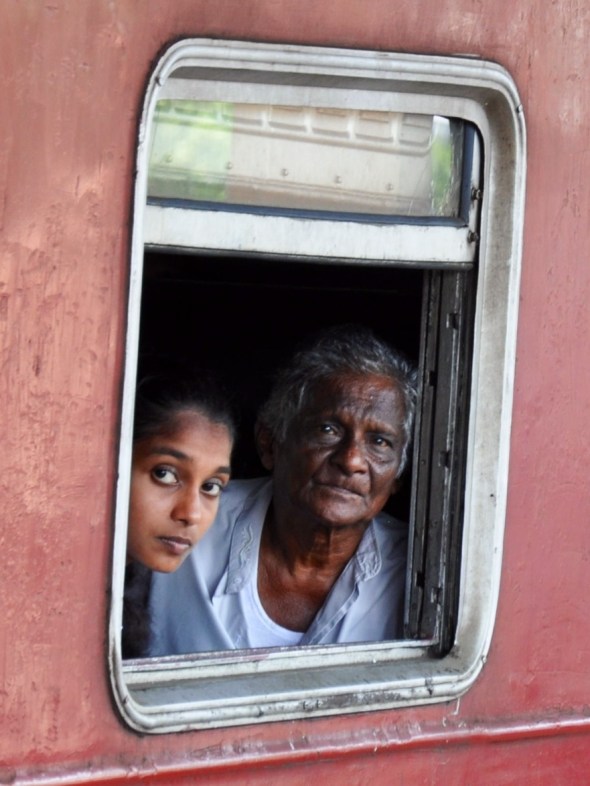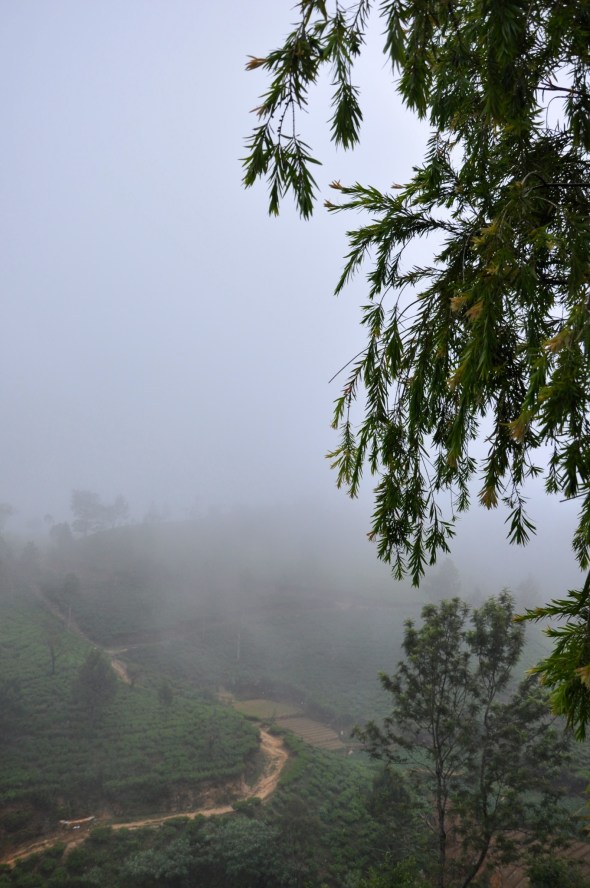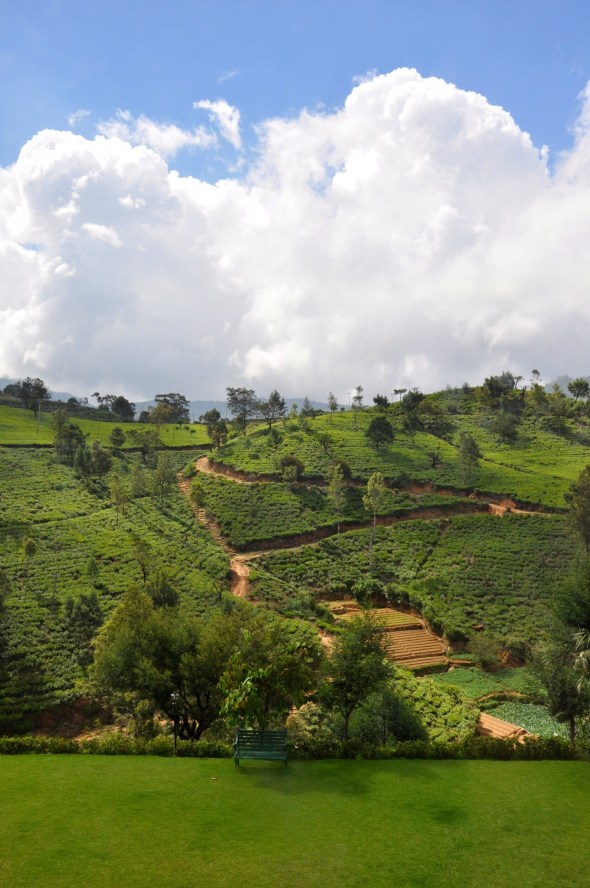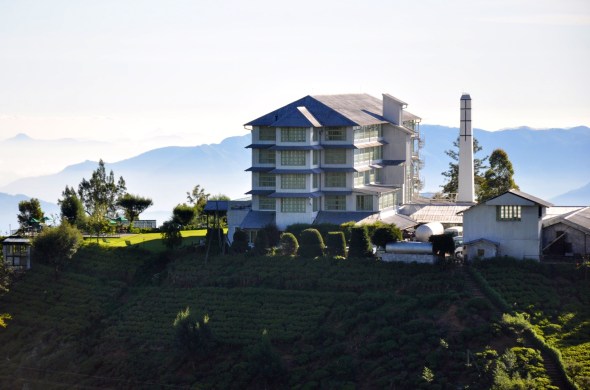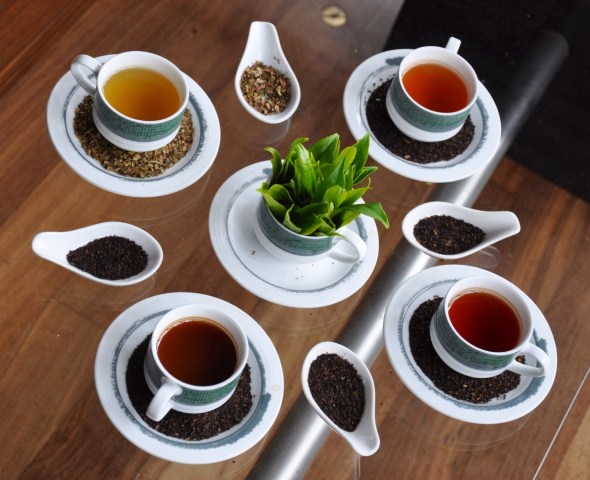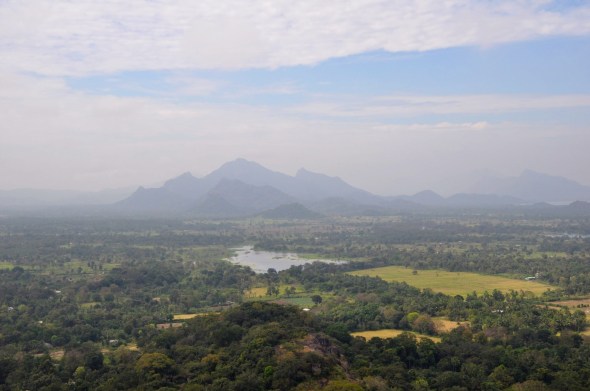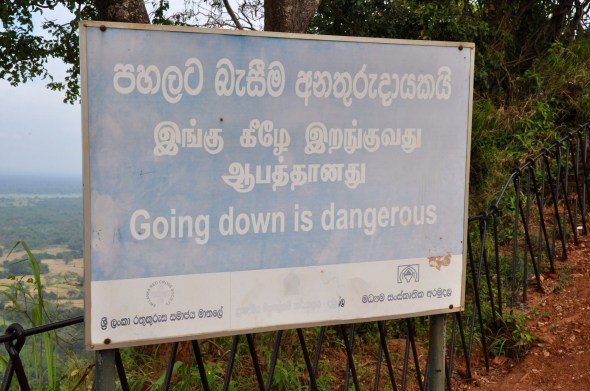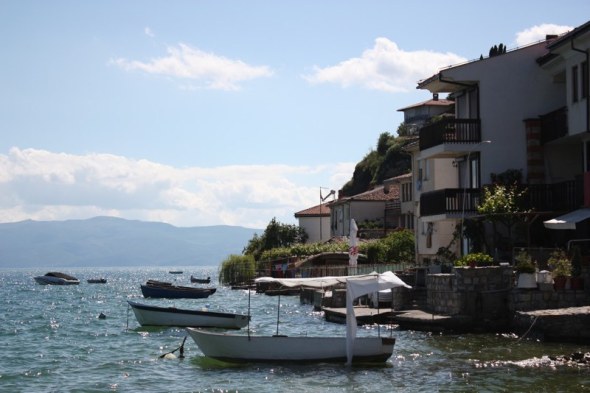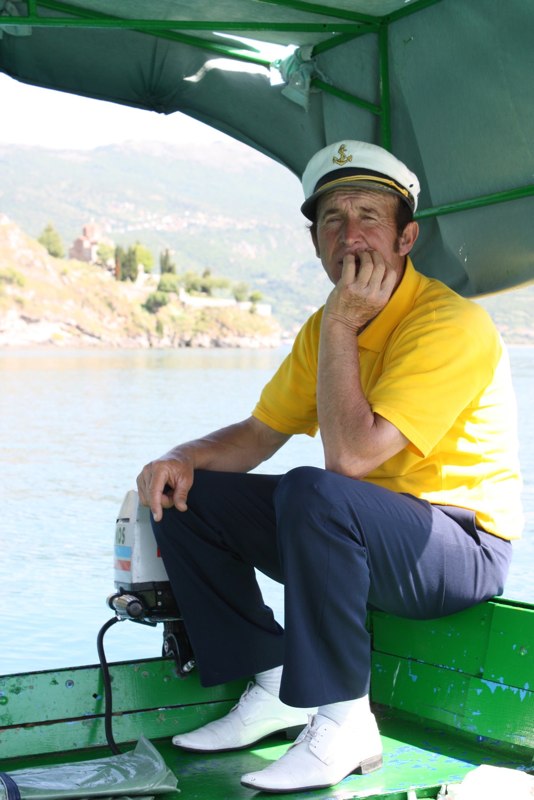A beginner’s guide to Kyrgyzstan
The love child of Switzerland and Mongolia, blessed with snow-capped mountains and hospitality like you wouldn’t believe, Kyrgyzstan makes an easy introduction into the ‘Stans. If you’re not sure where it is, you’ll find it on China’s western border – go halfway across Russia and then down a bit. The country’s attractions haven’t yet reached the radar of many travellers, and when the Border Force officer quizzed me on where I’d flown in from yesterday, he thought I said Kurdistan. Yet, it scored a mention on the Lonely Planet’s must see countries for 2019. So what can you expect of Kyrgyzstan?

Getting there
There are no direct flights to the capital Bishkek from London, and in fact the country’s airlines are off limits, featuring on the EU’s “not safe to fly” list. Given that an indirect flight was necessary and Kyrgyzstan was to be my sole Central Asian destination (for now at least!) I flew with Pegasus Airlines via Istanbul. They operate out of Stansted which is convenient as that’s my closest airport. Book well ahead and they’re pretty cheap too. My flight cost £337. Though there are plenty of options for the first leg, flights to and from Bishkek are limited to one a day. Schedules change, as they did for me between booking and date of travel. What had been a three hour layover on the outbound journey changed to a five hour layover.

That had the minor advantage of arriving at a more convenient 7am, but Sabiha Gokcen Airport isn’t close enough to the city for between-flights sightseeing unless you have a seriously long layover, so I holed up in Starbucks instead. If you’ve never been to Istanbul, pick an early flight out of the UK into the city and kill time sightseeing until the second flight departs at 11pm. It takes about an hour on average to get from the airport to the city, but allow time for traffic-related delays.
Another option might be to use Air Astana and combine Kyrgyzstan with a visit to neighbouring Kazakhstan. Bishkek and Almaty are little more than a couple of hundred kilometres apart. Air Astana has direct flights from London for a similar price. Check your visa requirements before you book.
Getting around

Depending on what you plan to do and how ambitious your itinerary is, you could make use of the country’s network of public minibuses, known as marshrutkas. These bear the name of the destination on the front windscreen but you’ll need to figure out the Cyrillic alphabet. I’ve always found it helpful to memorise the first or last few letters of a place name so that it’s a simpler process to clock which bus is yours. Bishkek for instance shares the same last three letters so look for “kek” at the end of the word. If you plan to loop Issyk-Kul, the country’s largest lake, you shouldn’t have a problem finding transport. Note that these minibuses go when full and won’t stop along the route if they have their full complement of passengers, so plan accordingly.
If like me you want to cover more ground and head a bit further off the beaten track, it’s worth considering a car and driver. I found Advantour to be very helpful at the initial email stage, with prompt responses and useful suggestions about whether what I was planning was doable. Marat and I bounced ideas and refinements back and forth a few times before settling on an itinerary that covered the places I wished to see at a budget I could afford. Including accommodation, I paid about £800 for my week’s activities. You’ll see from the itinerary below that it represented excellent value for money.

Another option, particularly if you have a little more time to play with, is to make use of the CBT organisations that are spread across the country. Community based tourism is a big thing in Kyrgyzstan and these helpful offices can sort you out with somewhere to stay, transport and the full gamut of activities. Each town has its own, and some even have several competing CBTs. They can hook you up with local guides, hiking packages, horse riding treks and more. I also liked the fact that they’re big on interactive experiences and will arrange cooking classes, felt-making demonstrations and more. This casual insight into Kyrgyz culture is great for the first-time visitor. Many of the bookings that Marat made for me were via the CBTs, but it’s useful to know you can cut out the middleman.
How to spend a week in Kyrgyzstan
Day 1
The advantage of arriving on the night flight is that you have an extra day to play with. The downside of pushing fifty is that sleeping fitfully on a five hour flight doesn’t refresh you enough to permit morning sightseeing. The good news is that many of Kyrgyzstan’s hotels and hostels offer an early check-in for 50% of the room rate. I opted for the budget-friendly Apple Hostel for my first night and a half, which came in at about £30 for an ensuite double for sole occupancy. Its edge of town location was good for a rush hour arrival as we didn’t get caught up in any traffic and took just twenty minutes to get from the airport. The taxi transfer, arranged by the hostel, cost about £7. There’s a cheaper shuttle bus which runs more or less during working hours.
I had a much-needed nap and then had Marat send my driver over for noon. After a brief detour to his office to pay for my tour, Adyl drove me to nearby Ala-Archa National Park. This beautiful park is only about a half hour drive from the city and is centred around a dramatic canyon flanked by mountains. In late May, there was still a slight chill in the air, but blue skies meant that it was perfect hiking weather. A tarmac path takes you along the river bank. That trail ends at an outwash plain where graded cobbles and streams of water can be forded to continue the walk. You can hike for 18km though I settled for a shorter walk. A couple of red squirrels were very friendly when I got to the benches.

Day 2
I was keen to ride, and had read that one of the best places to do so was in the Chong Kemin valley, a few hours east of the capital. Marat suggested I’d need to get almost as far as Karakol today to be able to complete my wish list, so I opted for a two hour ride. My guide was the chatty Beka, who’d gone to Bishkek to study English and French before returning to his beloved valley. My request for a helmet was an initially misunderstood, as he fetched me a cap to wear. The second attempt was a bicycle helmet which I figured was better than nothing.
The next two hours were a pleasure, taking a leisurely ride through rolling hills and fording occasional streams (more importantly, learning to recognise the signs that your horse is about to take a bath with you on his back). Beka interspersed nuggets of Kyrgyz heritage and history with tales of his own somewhat chequered love life. Aside from my horse almost bolting after being startled by the air brakes of a lorry as we got back to the village, it was a most relaxing ride.
From there, we drove east, doubling back to stop for lunch in the Kyrgyz equivalent of a motorway service station midway through the Boom Gorge. Food’s cheap: you can have a proper meal for about 150 som (£1.50). Following the north shore of Issyk-Kul from a respectable distance, we pulled off the highway at Tamchy for a photo stop on the beach itself. We were a few weeks off main tourist season, so the place was deserted save for one lone paddler. The neighbouring resort of Cholpon-Ata is very popular with Russians in summer. From what I could tell, it had a lot in common with the Black Sea resorts they also favour.

Our overnight stop was at a charming guesthouse, Reina Kerch, not far from Karakol. Set off the main road, it boasted panoramic views of the nearby canyon, but was also a working farm. Herds of sheep and cows pottered in distant fields but it was the horses I was keen to see, as the farm prided itself on thoroughbreds. The best competed in trotting races and I was able to watch one of their most successful stallions impregnate a mare. A tour of the stables followed. Next up was a boorsok-making demonstration. Boorsok is a fried dough cut into ravioli-like pieces. The dough was already made but I helped roll, cut and fry. It was salty and delicious. Dinner was excellent, making good use of the farm’s homegrown produce.
Day 3
Staying just outside Karakol on a Sunday, it was hard to resist a visit to the animal market on the edge of town. Scotski Bazaar isn’t the country’s largest – that honour goes to Tokmok’s weekly market which we’d passed the day before. The action starts in the middle of the night, but at around nine, it was still busy enough to be worth a visit. Sheep are traded nearest the entrance; those hoping to sell tie them to car bumpers with string leads. Further in are the cows and bulls. I was told a decent cow could go for $700 or $800. At the rear are the horses. I was made to feel very welcome.
Next up was Karakol itself, for a brief visit to the Dungan Mosque, which looks more like a Chinese temple than a regular mosque. That’s no surprise: the Dungans are Chinese Muslims who fled across the border in the 19th century. The colourful timbers and ornate pictures on its exterior were bright and cheerful. I wasn’t allowed in, but was invited to peer through the door. Around the corner was a charming wooden Orthodox Church, which replaced an earlier stone church that was felled by an earthquake in 1890. It didn’t have the glittering domes of other Russian churches I’d seen in Kyrgyzstan and beyond but it was a delightful sight. Mass was taking place, so I contented myself with a glimpse through the door.

From Karakol, we followed the southerly route around Issyk-Kul. The Jety-Oguz valley was a short but worthwhile detour for its beehives as well as the Broken Heart and Seven Bulls rock formations. As we drove out of the valley, the weather took a turn for the worse and we drove through some heavy squalls. The spectacular mountain backdrop was a damp squib, obscured by thick cloud. The foreground scenery was stark also, nowhere near as pretty as the panoramic views I’d enjoyed thus far.
No matter, just after the scruffy town of Bokonbaevo we pulled off the main highway to reach an Alpine meadow, where we had an appointment with an eagle hunter. He produced a magnificent pair of golden eagles from the boot and back seat of his car – they couldn’t travel together as they would fight, he explained. His display was both captivating and, when he produced a live rabbit as bait, horrifying. However, I tried to rationalise the sacrificial bunny as nature’s pecking order. Nothing would be wasted, said the hunter, bundling the kill into a sack to take home. It would feed both eagles for the rest of the week. The thrill of watching a skilful bird such as this home in on its prey was, I reluctantly admitted to myself, impressive. If you’ve no stomach for hunting, you might choose to skip this, but such a tradition has been a part of the Kyrgyz culture for centuries.
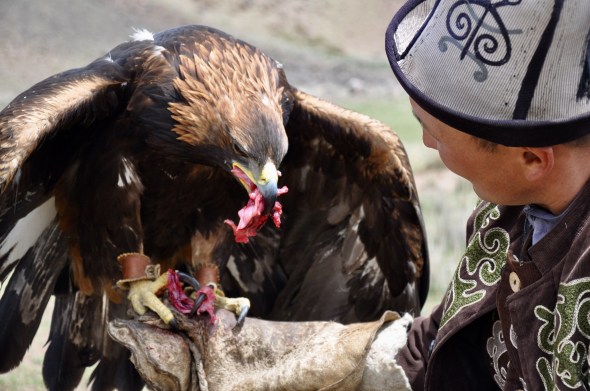
Back on the road, through more heavy showers, we reached Kochkor. Late afternoon, I was treated to a shyrdak demonstration. Felt-making is another important Kyrgyz tradition and my tutor was as skilled as she was smiley. Once again, active participation was expected and I found myself making the reed mat and stitching fabric together. A full sized carpet, I was told, takes five people two years to make. A single square can be knocked out in ten days. And I’m pleased to report there was no hard sell for either. Accommodation tonight was at a very plush homestay on the edge of town, affording magnificent views of the Tien Shan Mountains when the sun finally made an appearance.
Day 4
After the previous day’s storms, a dumping of snow on the mountains wasn’t the best for our ride up and over the Kalmak-Ashu mountain pass (highest point 3447m) to Son-Kul. This lake is smaller than Issyk-Kul by some margin, but its remote location ringed by snowy peaks makes it breathtaking. Late May is very early in the season to be up there at all, and the road had only been open for two weeks.

We climbed steadily above the tree line. The road was wide, but it wasn’t long before we were driving alongside snowdrifts two metres high. The reward at the top for being one of the few to attempt it was a pristine meadow of snow which I left with two long lines of footprints. There was also a snow filled long drop toilet. This far into the tour, it had become something of a joke between Adyl and I that I couldn’t go more than a couple of hours without a toilet break.
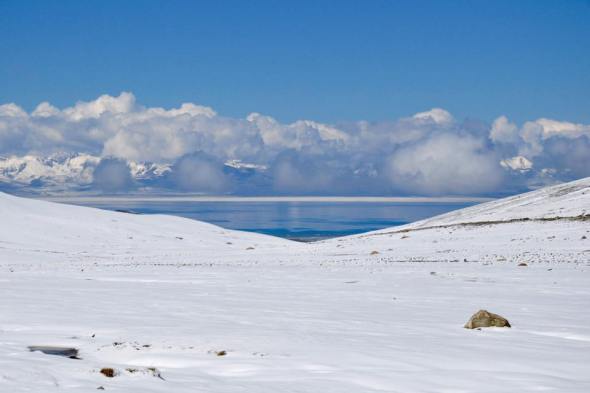
The approach to Son-Kul was just as wonderful, descending to emerging spring grass and fields of yellow buttercups. A few yurts were open for business, but at 3016m the lake is a summer destination. After crossing the Chu River, the lake’s only outlet river, we attempted to off-road to the lakeshore but the ground was still too soft for this to be possible.

After a few failed attempts we bailed and drove down the spectacular Thirty Three Parrots Pass. A series of dramatic switchbacks carries you down the pass, and at each hairpin bend I caught my breath. I was glad to be the passenger! It’s surely up there with one of the world’s best drives though, if you have the head for it. A French traveller in a camper van had got cold feet halfway up and was trying to pick up courage to complete his ascent. A family of nomads in a small lorry, yurt in the back, made light work of it and waved enthusiastically.

Before we headed into Naryn, Adyl invited me to try kymys, fermented mare’s milk which has a rather unpleasant sour taste to those unused to it. I managed a couple of sips, which was more than can be said for my attempt to drink a cup of Maksim, another popular sour milk drink which is just about the most vile thing I have ever tasted. Bustling Naryn was a bit of a shock to the system after a day’s solitude but Datka’s Guesthouse was comfortable and clean. At about £18 for an ensuite room with TV and hairdryer, breakfast included, it was a steal. She throws in dinner too for an extra 350 som (£3.50).

Day 5
A much easier drive of around an hour and a half took us to Tash Rabat. This caravanserai is centuries old – no one knows quite how many – with metre-thick walls and atmosphere in spades. A lady emerged from one of the yurts opposite to unlock and collect the 100 som entrance fee (about £1, a bargain!) I was fortunate to have the place to myself for the first half an hour or so, wandering from room to room trying to imagine what it might have been like to stay in such a place. Some rooms had long benches of rock, others were square. All had skylights open to the elements which let in shafts of light. I emerged from one side chamber to give a recently-arrived Korean tourist the fright of her life (unintentional).
Outside, the way that Tash Rabat was engineered means that it’s pushed right up against the hillside. Climbing onto the roof and gazing down into the skylights is a peculiar sensation. The Korean had hiked up a nearby hill, so once again I had the place to myself until a bus load of Kyrgyz pulled up. The kids in the party scaled the walls with ease, chucking tiny stones down to their parents which, given the tone of voice, earned them a scolding.
My overnight lodging was within sight of Tash Rabat. Sabyzbek, a 62 year old maths teacher turned farmer, had a small guesthouse and a collection of four inviting yurts. Located in the quiet Kara-Kojon gorge, the road crossing the river and enabling access by car had only been built five years ago, transforming tourism in the valley. He was keen to show me both, reminding me several times that at 3200m and with a chill wind barrelling down the valley, the yurts would be cold once the sun set. Temperatures would fall below zero, he said, though I couldn’t pin him down to exactly how far. I decided to risk it for the adventure, figuring that I could pile on the spare bedcovers and every fleece I’d brought to stave off the overnight cold.

Just before lunch, a wander around the farm led to another confronting sight. This time, the local vet was castrating a stallion. Judging by the horse’s wide eyes and blowing nostrils, accompanied by the ropes holding him down, the operation was performed without the use of tranquillisation. Potassium permanganate was used to sterilise the area and a hot poker cauterised the wound. It was uncomfortable to watch, but again, part and parcel of nomad life. Such lack of censorship is both the joy and the pain of visiting somewhere unused to mass tourism. I left as the second patient was being led to his fate.

The afternoon was a pleasant one. Though the wind was biting, once you were out of it, the sun was rather nice. I tucked myself into a natural hollow, two woolly jumpers keeping me snug as I felt the warm sun on my face. Farm life carried on around me: a cow mooed insistently, chickens clucked over and pecked at the discarded balls of the morning’s business and horses pottered about. Every now and then, a car passed, bound for Tash Rabat, but by and large, it was quiet enough to hear birdsong. After dinner, I chatted with Sabyzbek’s daughter Tuzsun about Kyrgyz life, expectations and change. Dusk fell late; a pink sky soon clouded, I didn’t know if that was a good or bad thing when it came to how warm the yurt would be. A fire was lit in the coal burner, started by dung, just in case. I was toasty – so much so that I spent half the night with one leg stick out of the duvet resting against the cold slats of the yurt in an attempt to cool off.
Day 6
It was a long drive back to Bishkek and an early start was in order. The fire had kept me toasty inside the yurt but there was a frost on the ground outside. A bowl of steaming porridge and a mug of hot tea later, we were on the road again, retracing our steps to the capital. Bishkek’s sultry heat was a shock after several days in the mountains. I took a stroll from my centrally located hotel to Ala-Too Square. Its tall flagpole is no match for those in other Central Asian capitals, but impressive nevertheless. Nearby are several leafy parks offering the temptation of plenty of shade, as well as the presidential palace known as the White House. After a cold drink, a so-so pizza and a chat with a waiter keen to practise his English, it was time to go and pack for the following morning’s flight home.

Would I go back?
Absolutely! Kyrgyzstan was everything I’d hoped it would be and then some. I’d love to stay in a yurt at Son-Kul and revisit the delightful Sabyzbek and his family at Tash Rabat. Osh and the Fergana Valley would also be on my wish list for a second visit. I’d definitely use Advantour again. Marat’s suggestions were invaluable and his organisation faultless, well worth the money I spent!
A few observations
The Kyrgyz are hospitable and go out of their way to make you feel welcome. I asked one hotel owner why. “Simple,” she replied, “many of us can’t afford to travel, so we learn about other countries through the people that come to see us.” I’d suggest learning a few phrases in Russian as many people speak very little English. Having a copy of the Cyrillic alphabet to hand so you can figure out lone words is also a good idea.
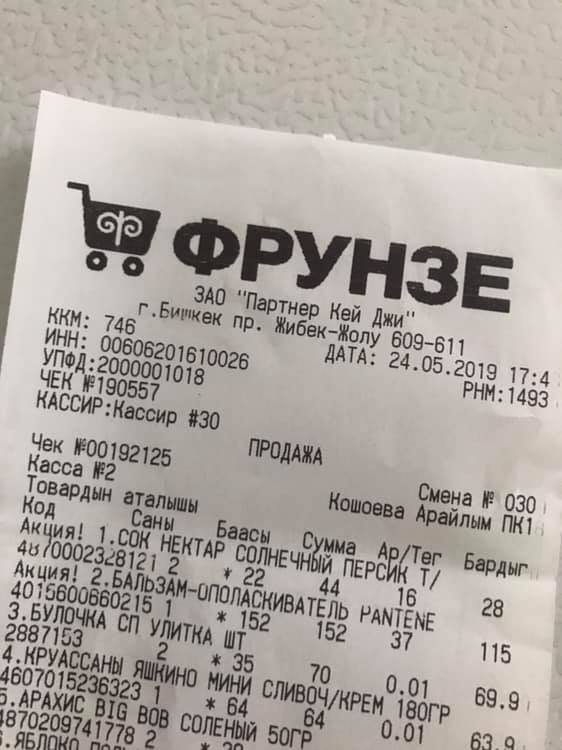
Kyrgyzstan is a cheap destination and your money will stretch a long way. Even my smart hotel in Bishkek cost only $95 for a luxurious and very central room. Most comfortable guesthouses come in at around a quarter of that cost. It would have been possible to do the Ala-Archa and Issyk-Kul trips by marshrutka for a fraction of the cost of a car and driver. Likewise public transport to and from Kochkor and Naryn was plentiful.
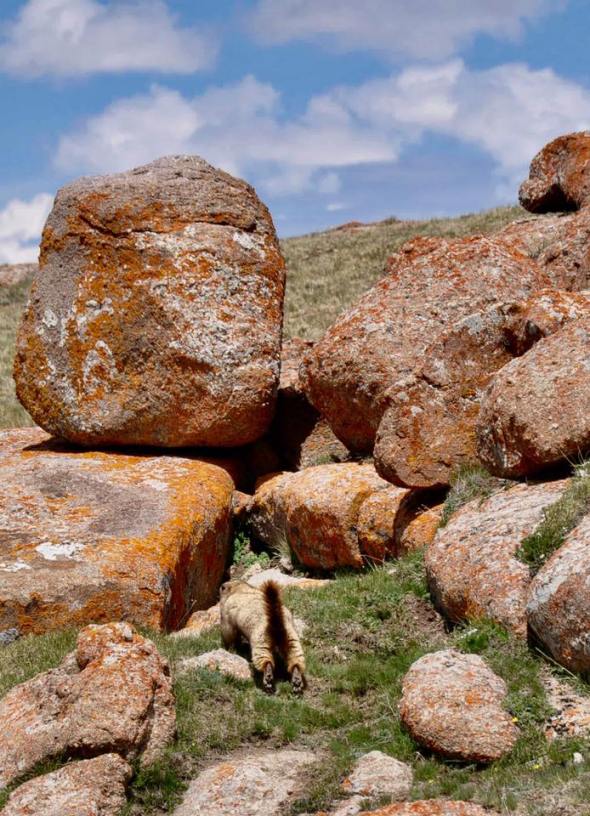
If you intend to self-drive, the roads are for the most part in excellent condition. Aside from the gravel roads up to and down from Son-Kul, there were none that would challenge an average driver and there were very few potholes. However, road signs are sporadic in places so it’s best to take a good map. Traffic police are everywhere: watch your speed if you don’t want to be flagged down and fined. Watch out for herds of livestock being moved between pastures and the occasional suicidal marmot.
Travelling in the shoulder season, you’ll have many places almost to yourself. I visited in late May and the road to Son-Kul had been open for two weeks, though snow still lined the Kalmak-Ashu pass. By mid-June, there’ll be plenty of yurts set up to receive visitors and off road trails down to the lakeshore will be safe to drive. By September, the season’s pretty much at an end unless you plan to ski.
It’s customary to take off your shoes when entering a house, and the same applies to homestays, guest houses and yurts – in fact the only place where it wasn’t expected was the fancy pants hotel in Bishkek. Do as the locals do and opt for footwear that can be easily slipped on and off, rather than have the bother of unlacing hiking boots each time you want to go inside.

Toilets, save for posh hotels and the airport, are almost universally of the squat variety. Some are much cleaner than others. Those I encountered at the Kalmak-Ashu pass were full of snow. Have a stash of toilet paper handy but note that it needs to go in the bin as Kyrgyzstan’s plumbing can’t cope with paper.
English readers, everything seems to come in Morrison’s carrier bags. It’s very odd receiving a plastic bag featuring the distinctive M from a few years back and even more bizarre when it happens over and over again. I’ve yet to get to the bottom of this mystery (it’s been 12 years since this design has been used in the UK) so if anyone who’s reading this knows why, do leave a comment!

A day with the steppe nomads
My back jarred with every rut. The small Japanese saloon was poorly suited to Ulan Bator’s potholes, let alone the enormous bumps and holes over which we creaked in the Mongolian countryside. It was clear that at some point, the arid steppe climate had experienced some rain, and the trucks and 4x4s that had come before us had churned the mud into deep and now rock solid furrows. Having spent two nights tossing and turning on the train from Irkutsk, and a good nine hours hanging around at the border, I was beginning to wish I’d taken my chances with the pickpockets of UB (the guide book’s judgement, not mine!) and not been in such a hurry to get out of the city. It had its advantages though.
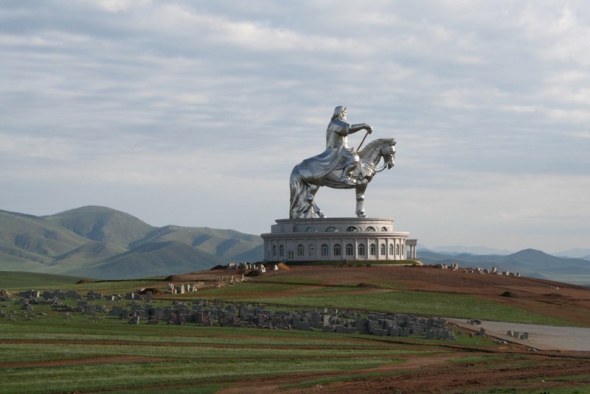
A 40-metre high statue of Chinggis Khan an hour or so out of the city posed serenely in the early morning dawn, awaiting its hordes of visitors once they had prepared their picnic lunches. We paused briefly to admire it by the roadside before moving onwards to tangle with a stray herd of cattle. After two hours, we reached the Steppe Nomads ger camp, where my Italian travelling companions alighted. For me, a half an hour jaunt across the fields would take me, jolt by painful jolt, to my nomad hosts, with whom I would stay the night.
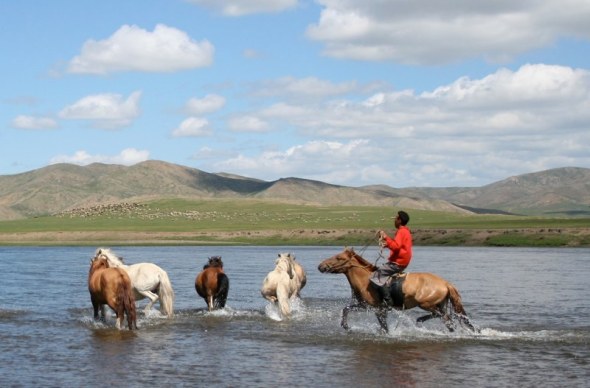
The setting was idyllic. Enormous blue skies dwarfed the gers, the traditional Mongolian felt tents, perched halfway up the field; scrubby meadows led enticingly to deceptively distant mountains. I took in my immediate surroundings. Four gers, a 4×4 and, underneath the latter, three dogs snoozing in the early morning calm. A short way up the hill was a rustic corral containing a few horses, downhill, a couple of small paddocks for sheep and goats. In the distance, cows and horses roamed free, down by the River Khergen. A couple of other gers and a truck back the way I’d come completed the picture. It seemed wonderfully simple compared to the complicated life I lead back in the west.
The guest ger was beautifully decorated. Intricately painted designs on orange woodwork contrasted with the faded cream canvas of the ger’s exterior. Hot pink beds with carpet mattresses were pushed to the edge and a matching dressing table was festooned with family photos and mementoes. It seemed to me a fairly comfortable introduction to camping! My driver indicated that the small structure across the field that looked like a British Telecom workmen’s cocoon was actually the toilet.

On closer inspection, the structure was tall enough to provide sufficient privacy, the boards firm enough to avoid any hapless falls and there was even a shovel and some loose dirt by the side for me to cover my tracks. Having a wash was going to involve several kilometres of trekking down to the river, but I figured I’d already had two shower-free nights on the train, and, let’s face it, the horses weren’t likely to complain. I felt very smug.
And then I was served breakfast.
I struggle with a piece of toast some mornings, so my traditional Mongolian breakfast of sick on a plate was hard to stomach. In actual fact it was some kind of curd cheese, and to some palates, delicious I’m sure, but, for me, that morning, it was sick on a plate, served with small finger shaped pieces of lardy bread. The cinnamon tea was lovely though, so I drank plenty of that, forced down some bread and sick and finished off with a caramel flavoured boiled sweet which had been thoughtfully provided in a small dish. I felt terribly guilty for struggling with the food, as it was served by a delightful nomad lady with a squeaky voice and a smile as broad as the Gun Galuut horizon.
After breakfast, I grabbed my camera and headed up to the corral to watch the horses. I envisaged lounging by the fence, channelling Kristin Scott Thomas in the Horse Whisperer. Unfortunately, unlike in the States, these poles were not fixed and periodically they would be charged by the horses before they made a break for freedom and hurtled down the field. Not wishing to be trampled, but still wishing to be close enough to secure some decent shots, I kept one eye on the action and the other on the camera, as poles cascaded down around me. The young men of the nomad group had the difficult task of roping the horses and fitting their bridles ready for the tourists at Steppe Nomads to ride them later in the day. It was certainly no easy task. Even with their dexterity, lassoing the only semi-tame creatures was no easy task, and the animals’ mad eyes and toothy grins only served to add to the humour of it all from the bystander’s point of view. Many times I watched as the horses bolted and their would-be captors rode expertly after them to herd them back up the field. I’m not sure I would have neither such patience nor the perseverance, especially whilst being watched. I was reassured to see that the young girls at the nomad camp thought it was as funny as I did, much to the lads’ embarrassment. Eventually, to the relief of all those involved, sufficient horses were roped and galloped down the field at an impressively fast pace to meet their excited riders.
Watching the action is all very well, but I felt a bit uncomfortable being the outsider, and so came ten year old Tilly to the rescue. Her name was something much longer and infinitely more unpronounceable, so Tilly was settled on as a name we both could manage. Tilly set about making it her mission to teach me to play volleyball. “Gee-oo-lee-aah!” she would cry, lengthening my name so much that it seemed I had been re-christened especially for Mongolia. At regular intervals throughout the afternoon, she would call for me, and we would continue with her attempts to refine my awkward technique. “Yee-ess. Verrry good!” was the response I hoped for, though more often than not, she just collapsed in a fit of giggles and ran down the field after the stray ball. It was an ice-breaker, nevertheless, and I was soon adopted as the new friend, someone to show off to (but not to share with!) her younger brothers. Before I knew what was happening, I was carted off the field to help milk the cows. The nomad women (and tiny infant children!) made it look simple, but for me, the hardest part was balancing on the tiny wooden milking stool without toppling over and falling into the freshly dropped manure. Once I’d mastered that, milking was easy – if a little messy. Much the reverse of volleyball, it seemed.
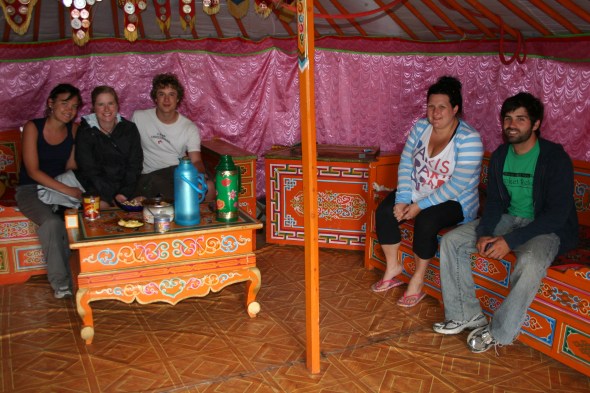
By the time the tourists came up to visit on their horses, the latter looking much tamer than they had that morning. The Italians looked a little uncomfortable and slightly saddle sore. It seemed like forever since I had left them this morning and I was surprised at how easily I’d settled in to such an alien environment. Dinner was brought out – a watery but delicious mutton stew – and I savoured every mouthful. I helped to unload two horses from the nomad’s truck and watched, toddler on hip, as the farmer administered some medication.

Later we sat, watching the sun set and the stars brighten in the blackening sky, smiling contentedly and watching the animals settle in the paddock for the evening. It was clear to see that this was a tough life, but the community was close-knit, the scenery was world-class and I had laughed more than I had for a long time. Shower aside, did I really need any more than this?
Photos from Ushguli
During my recent trip to Georgia, I spent a day in the hotch-potch straggle of villages collectively known as Ushguli.

One of the best preserved Svan towers
They’re reached by an apology of a road from Mestia, the main focal point of tourism in Svaneti. I shared a taxi with a couple of Germans to bounce and slide over gravel, in and out of potholes and scarily close to sections of road which had just fallen away. The road’s in the process of being rebuilt, so don’t let that put you off.

The view is worth the effort
Ushguli translates as “fearless heart” which matches the reputation of the Svans historically being a fearsome people suspicious of incomers. Five villages form the settlement of Ushguli: Murkmeli which you pass as you go in, Chazhashi where your driver will park, and then higher up Chvibiani, Zhibiani and Lamjurishi, the highest of which claims to be the highest permanently settled village in Europe. It’s a slightly dubious claim, though, not least because geographers and other experts can’t even decide whether Georgia is European or Asian. (I’ll save that one for a later blog post.)
So what is it about Ushguli that makes it worth the arduous journey? Mostly, it’s the setting. Reached at the dead end of this rural road, all that stretches ahead of you are the few clusters of homes and Svan towers that constitute the villages and then meadows framed by the mountain peaks of the Great Caucasus. UNESCO have had Chazhashi on their list since 1996. Part of the attraction is just to find a quiet corner and sit. There’s also an ethnographic museum in one of the towers which is far more interesting than it sounds. Honestly. I’m no great fan of museums but it was good.

12th century cross in the ethnographic museum
In Mestia, the person to find is the lady that sells the marshrutka tickets from her agency next to the bakery in the centre of town. She manages more of the drivers and you’ll wait for less time. A return ticket in a shared taxi costs 20 lari. Be prepared to negotiate how long a wait you’ll have in Ushguli with your driver. Tip: if you wish to spend more than a couple of hours, it’s worth popping into the restaurant he’s likely to have holed up in to make sure he’s not been knocking back too many beers.
Some of my favourite shots from the day:
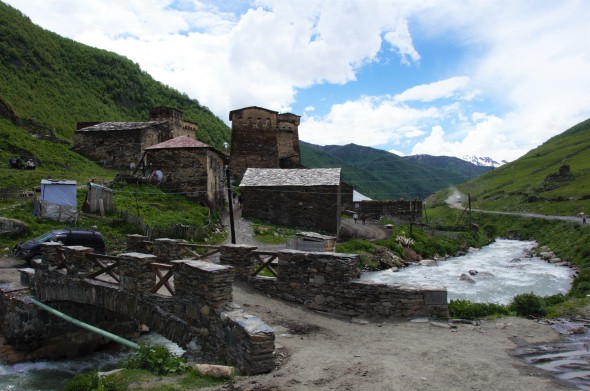
Chazhashi’s riverside setting

View from inside the ethnographic museum over Chazhashi

Sheepdog guarding the ethnographic museum
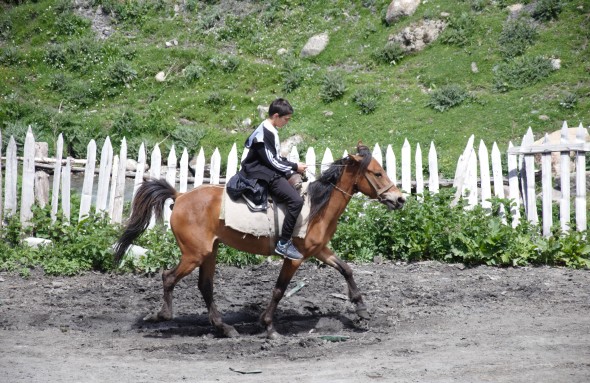
Young tearaway on a lively horse

Grandma takes a rest

Scratching post

Cow under the public toilet

Piglets feeding

Tower and current occupant!

Cow wandering through the village

Looking down over Ushguli

Monastery dwarfed by mountain

Transport home? “You can go faster but I can go everywhere.”
If you’re planning a trip to Georgia – and you should – make sure you don’t miss Svaneti. You can stay in Ushguli and you can even do a three day hike there from Mestia in the short summer season. Or you can do as I did and base yourself in Mestia and visit Ushguli for the day.
Why you should visit the Armenia Genocide Museum and Memorial
On Tsitsernakaberd Hill, overlooking the city of Yerevan, you’ll find a pilgrimage site dedicated to the 1.5 million victims of the Armenian Genocide. Their harrowing story cannot fail to move you, as it did me.

I sit, alone. The music haunts every inch of stone and every speck of dust. The sound of violins, melancholic yet soothing, permeates the soul. I feel it. It seeps into my heart and as I focus on the flickering flame, I raise a hand to my cheek, wiping a persistent tear. A few sorry bunches of carnations have wilted where they were placed. Tall slabs of basalt crush the sunlight. The sky is obstinately blue but in here, inside the stone circle, it’s a place of shadows and ghosts. I’m shocked at the strength of my feelings. Until yesterday, I hadn’t been aware an Armenian genocide had taken place. And I’m ashamed of that.
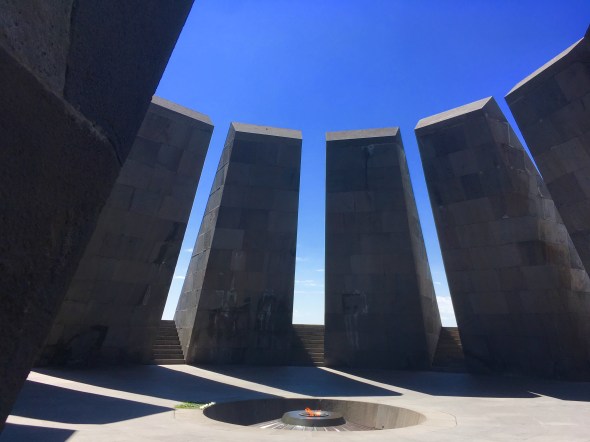
A cleaner arrives with her broom and sweeps, rhythmically, until my attention is forced out of its sad reverie. She busies herself collecting dead blooms and rearranging those that will stay. A young man follows her with a camera, framing and reframing his shots. He clicks repeatedly but then he too is still. A family of five arrive, speaking Armenian, and pose in endless configurations for snapshots beside the flame. The emotion I felt is lost and I glance at my watch. The museum is open. I head inside.
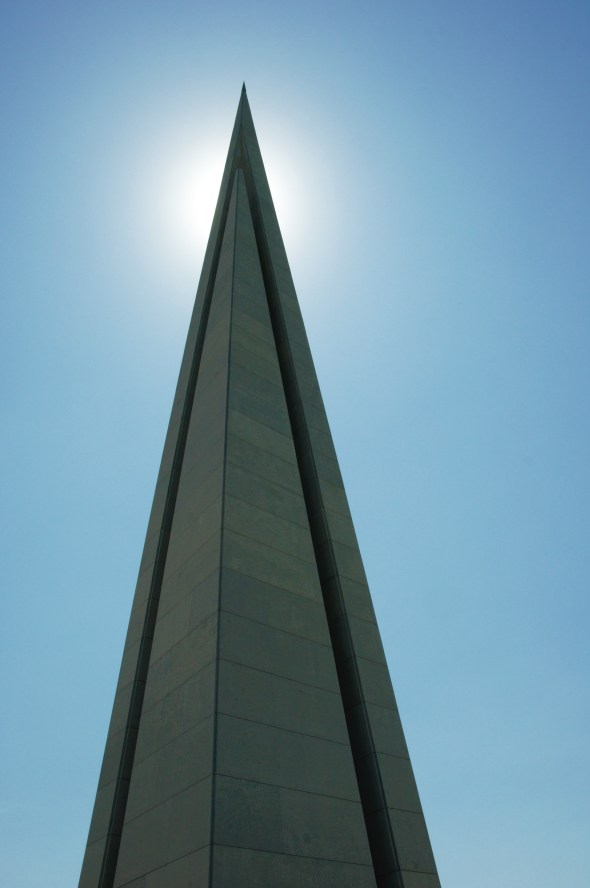
I read, missing nothing, trying to make sense of what happened. In the late 19th century, Armenia was a divided country. The Persians had ceded territories to the Russians, who occupied what was then known as Eastern Armenia. Strategically important Western Armenia had fallen to the Ottomans in 1555 and over four centuries later, they retained control. War between the Russian and Ottoman Empires had torn Armenia apart. Armenians living under Turkish rule looked to the Russians for protection but though the 1878 Treaty of Berlin set out basic rights for Armenians they were not honoured. Amidst growing calls for independence, Sultan Abdul Hamid, the leader of the Ottoman Empire, tightened his grip on the dissenters. Words were banned: Armenia, rights, freedom.
To ban the word freedom is an alien concept. From my privileged life in a stable democracy, how could I understand?
Compelled, I read on. In 1895, 300,000 protesters were massacred in Constantinople in an attempt by Hamid to shut down the Armenian Question for good. It didn’t work. Nine years later, there was another uprising. The stability of the Ottoman Empire was under threat. In 1908, a political party called the Young Turks seized power. Their policy of the “salvation of the Turkish homeland” could only be achieved, they held, by the liquidation of the Christian population. Under their watch, anti-Armenian atrocities continued unpunished. A further 30,000 were killed in a market in Adana in 1909. Their treatment was horrific. Many were set alight or stabbed repeatedly. The backs of children’s legs were gored with cotton hooks leaving gaping holes. A series of photographs documented the horror.

I’m struck by the eyes. They stare, vacantly, yet implore those watching to act. But it’s too late. I’m a century too late.
World War One was to provide cover for the vilest act of all. A secret treaty was signed, allying the Ottomans with the Germans. Needing the support of its largely Islamic population to survive, the Turks proclaimed Jihad in an attempt to demonstrate their religious credentials. In October 1914, 60,000 Armenians were called up to fight, joining others already conscripted. They fought, bravely, at Sarikamish on the Caucasian Front under Enver Pasha, but were no match for the wintry conditions. The Ottomans suffered huge losses and 70,000 lost their lives. A scapegoat was required. The Armenians were that scapegoat. Soldiers who had fought alongside Pasha were killed on his orders. Afterwards, the Young Turks turned their attention to civilians, murdering politicians, clergy, intellectuals and other eminent Armenians. Mass arrests followed, in Western Armenia and Constantinople.
The Armenian family I saw at the memorial see that I’m making notes. It’s diaspora season and they’re from LA, bringing their children to the home of their ancestors for the first time. They ask if I’m a writer and if I’m going to write about this. I promise them I will, emotion choking my words. The mother hugs me, an unspoken thank you.
Unarmed Armenians in Ottoman territory were rounded up to be sent to the deserts of Mesopotamia and Syria, their property looted as they left. Men were separated and stabbed. Women, children and the elderly were spared, but instead driven south. On the way, their police and army escorts stood by and did nothing as bands of Kurds and Turks kidnapped and murdered the helpless. Those who did complete the journey ended up in concentration camps. In Rakka, Bab, Deir Ez-Zor, Ras Ul-Ain and Meskene, 600,000 endured horrendous atrocities. They were subjected to medical experiments, pregnant women were used for target practice, bare feet were shod as if they were horses’ hooves, children were burned alive or dragged behind horses until they died from their injuries. Rape was common. An estimated 600,000 lost their lives.

It’s hard to reconcile what I’m reading with the gentle and welcoming Turks I’ve met on my travels. I’m shocked to find I’m upset, not because I think it’s not worth getting upset about, but because at Auschwitz and Bergen-Belsen and Dachau, I haven’t been. Sobered, desperately sad, but not upset like this. The tragedy that befell the Armenians feels worse, somehow, because I wasn’t aware it had happened. I feel that in some way that means I’ve betrayed them.
On May 24 1915 France, Britain and Russia issued a joint statement condemning and declaring the Turkish government responsible for a “crime against humanity and civilisation”. After the war, the Young Turks were brought to trial. The key perpetrators – Mehmed Talat, Ismail Enver and Ahmed Djemal – were brought to justice and punished for what they’d done. Yet today, the mass extermination of Armenians isn’t acknowledged by all countries. Britain views what happened as a war crime and doesn’t recognise it as genocide.

I climb, slowly, from the bowels of the museum back up into the sunshine of the plaza, legs and heart heavy. Another tear escapes from my eye but this time, I let it fall.
Practical matters
To visit the Armenian Genocide Museum and Memorial it’s easiest to take a taxi. From Republic Square I paid 700 drams, just over £1. The museum is free to enter. Leaving, the unofficial taxis in the car park were asking for 2000 drams for the same ride. I walked down the hill and across the footbridge to the Dalma Garden Mall, from where I caught the #27 marshrutka back to Mashtots Avenue for a 100 dram fare. The bus stops right outside the Blue Mosque, also worth a visit.
How tough is the hike to Chalaadi Glacier?
The older I get and the more my knees creak, the more I need to research possible hikes before setting on to ensure I don’t end up with aching muscles or worse, being stretchered out. But no one, least of all me, wants to find out that they’ve missed out on superb scenery on a hike that would have been perfectly within their capabilities. So when I found out about a glacier accessible from Mestia on foot, I set about reading up. The trouble is, many of those who post are young and fit. Their definition of an easy hike isn’t necessarily what I’d call easy. So here are the facts about hiking to the Chalaadi Glacier.

You don’t have to walk all the way
Technically, the Svans consider this hike a 25km round trip. The official tourist board literature states the duration of the hike as being eight hours. That’s beginning and ending in Mestia and walking up the road past the airport until it runs out. Well, 25km would take me more than eight hours including collapses, even if much of it is fairly flat.

Keen not to have to quit before the good bit, I hired a lovely driver called Nodani. I found him in the main square in his adapted Subaru – look for the Subaru sunshield and a disabled badge in his rear windscreen. He agreed to drive me to the suspension bridge that crosses the River Mestiachala. It costs a flat rate of 80 lari (about £26). It’s also possible to rent horses, but they looked pretty frisky and once you pay for the guide too, it’s not a cheap option.
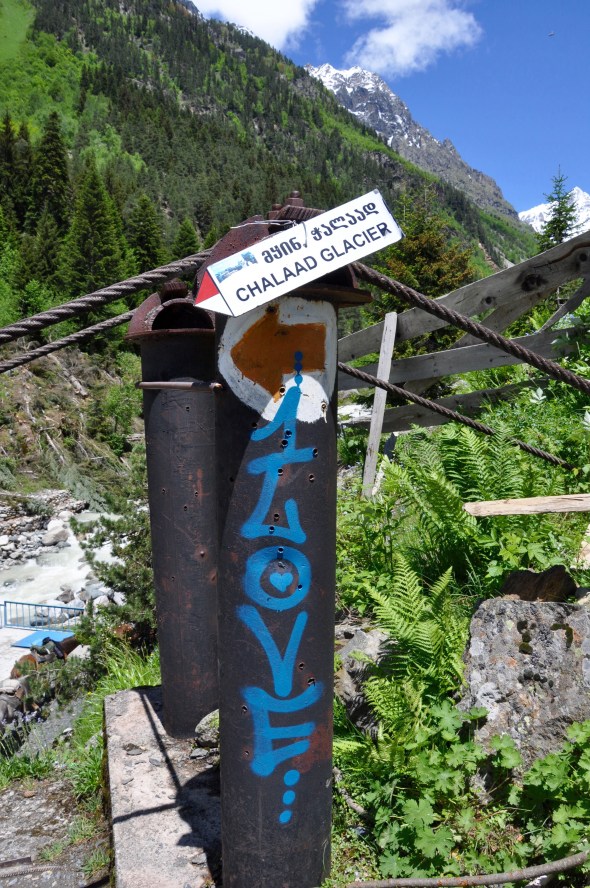
Allow time to enjoy the hike
Most people book a two hour gap between rides; I made it three so as not to have to rush. I was keen to take the hike at a steady pace and allow enough time to appreciate my surroundings. I thought I’d make an afternoon of it but in actual fact got back thirty minutes ahead of schedule. No biggie: there’s a cafe at the bridge where I waited for Nodani to come and collect me.

You won’t get lost
A concern if you’re hiking solo, as I was, is getting lost. Most trails are marked but the frequency of such signs can be less than you need. Not so here, where they’ve helpfully painted red and white rectangles on assorted rocks and tree trunks. There was even an arrow cut into the tree trunks in some places. It was very clear which direction you needed to take, so you won’t get lost.
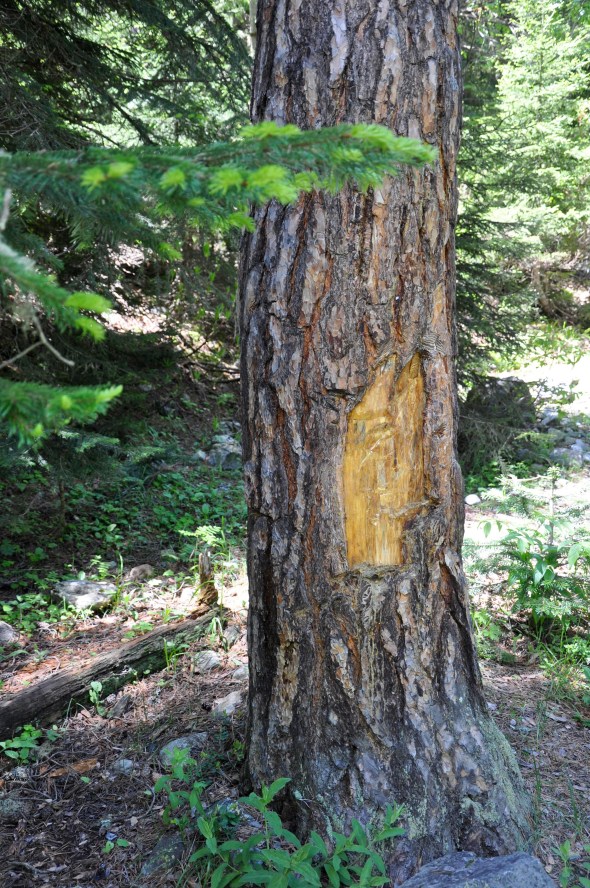
The uphill bits were a bit of a slog
Remember, I’m no athlete. If you are reasonably fit, then this will be a piece of cake. But the altitude at the river is around 1600 metres above sea level, rising to about 1920 up near the glacier. If like me you live at sea level, the thinner air won’t help either. But it’s shady amid the trees and where the route passes through the forest, you’ll see plenty of pretty flowers and lichen covered rocks.

The path wasn’t difficult to navigate as the stones formed a natural staircase. I took frequent rests and carried plenty of water. Further up, heavy rains a few days before my hike meant the water was running high and parts of the path had turned into a shallow stream. Luckily it wasn’t deep enough to leave me with wet feet.
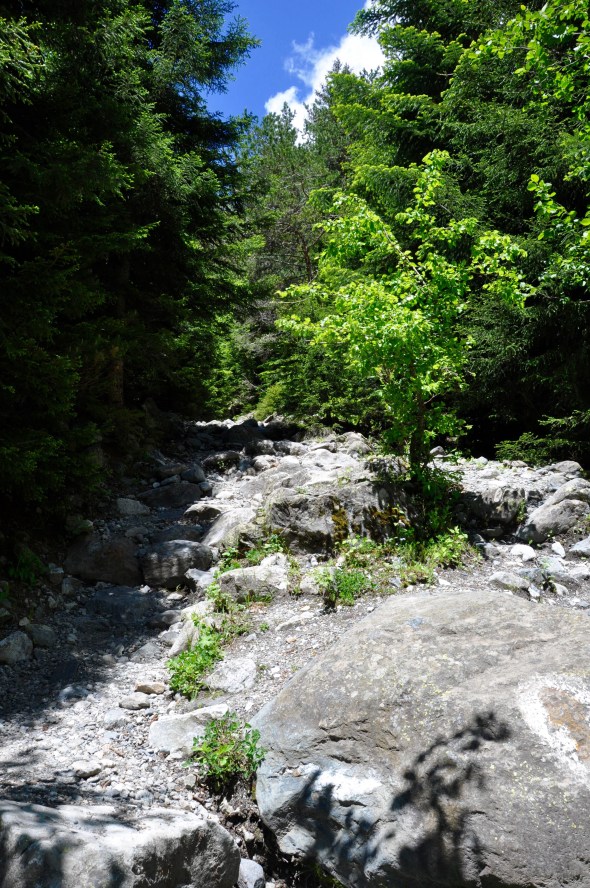
You have to cross a boulder field
About halfway to the glacier, you reach an area where rockfalls have created a big obstacle. Boulders of various sizes lie piled up. Some are steady, others move disconcertingly beneath your feet. I fell foul of such a hazard when I hiked one of Sweden’s High Coast trails last year and ended up with a nasty cut and bruised elbow. There are also deep gaps between some of the stones, meaning a misstep would leave me with a twisted ankle or worse. This was the scariest part of the hike, more so on the way back down as higher up the slope I could hear rocks falling. Fortunately I managed to cross without incident and didn’t end up a casualty of a rock avalanche. You’ll need decent boots though.

You can cut out the very top part of the hike and still see the glacier
Once you’ve successfully negotiated the boulders, the path is an easy one and leads to a flower strewn meadow by the river. Here, you get a fabulous view of the glacier itself and in its mountain setting, it really is a spectacular view. Turn around, and you’ll see mountains behind you too. Unless you’re really dead set on touching the glacier, you’ll be scrambling over terminal moraine to get any higher. Personally, given the timing of my visit in early summer when the ice is melting and there’s a real possibility of being hit by falling ice or rocks, I didn’t continue. If you carry on, as many do, it’s advisable to use walking poles.

Is it worth it?
That’s a resounding yes! If the weather’s playing nicely as it was during my visit, it’s hard to imagine a better way of spending an afternoon. But to maximise your time spent at the scenic parts of the trail, I’d definitely advise hiring a driver for that dull airport road.

Travelling the Georgian Military Highway
It’s been a long journey involving an overnight train and a four hour ride in a marshrutka, but I’ve finally reached Svaneti. My base is in Mestia and I’m writing this holed up on the hotel balcony overlooking three of the famous towers that dot the village. The birds are chirruping and the neighbour’s dog is letting me know if anyone walks up the rutted and very steep road that joins us to the main drag. The sun is valiantly making an attempt to break through today’s persistent low cloud, but tomorrow’s forecast promises sunshine and blue skies.

I spent yesterday travelling along the Georgian Military Highway, the route linking Tbilisi to the Russian border. The epithet “military” conjures up all manner of images, but you won’t see tanks or soldiers, just great scenery. I travelled with Envoy Tours in the capable hands of their guide Beqa. He was great fun, doing everything he could to ensure my Singaporean travelling companion and I had a fun day. From tour guide to chef to toastmaster, there was nothing he couldn’t turn his hand to.
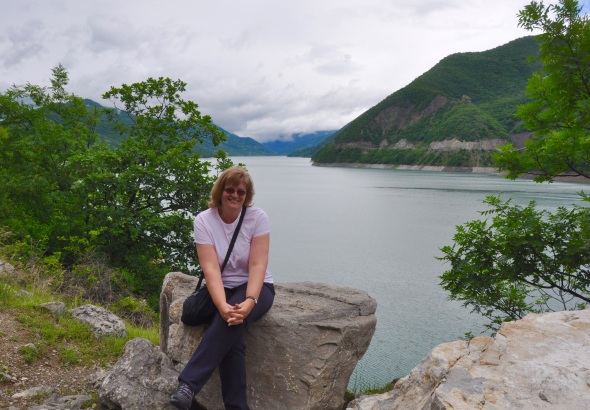
Our first stop was on the edge of the Zhinvali reservoir built in the 1980s to supply water to Tbilisi. It’s a picturesque addition to the landscape, though one that necessitated drowning several villages. The water level was high enough to conceal them yesterday, but when the water level is low, sometimes the tops of churches can be revealed.
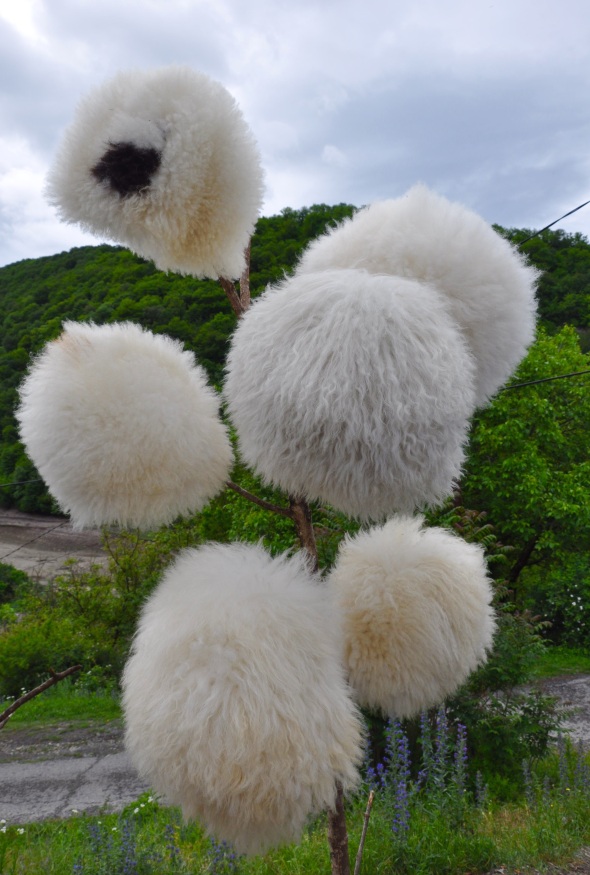
We skirted the edge of the reservoir to reach the fortress complex of Ananuri, where they were selling these fabulous sheepskin hats. Once, there was just a tower here on a hillside; now there’s a cluster of buildings with defensive towers and a 17th century church featuring ornate carvings.
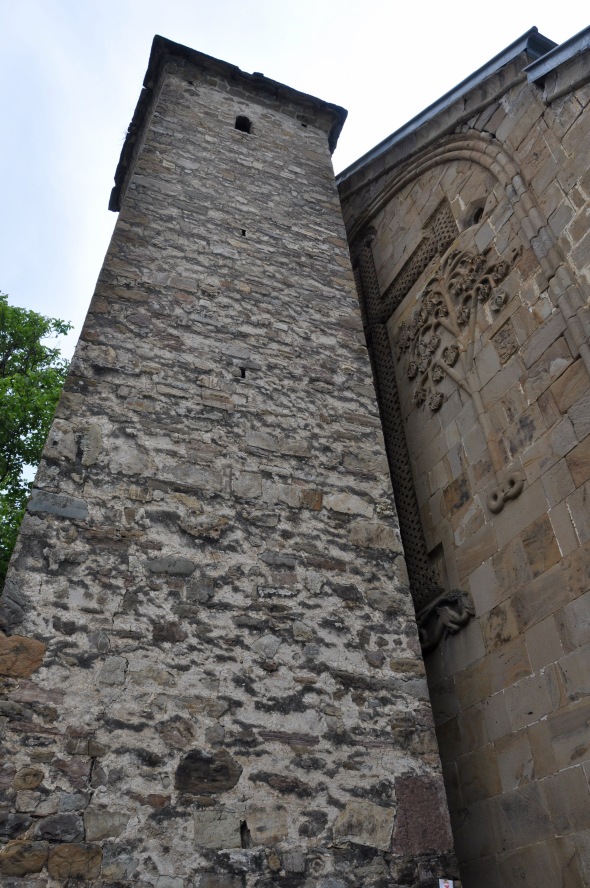
It was the first time I’d been asked to wear a skirt over my trousers as well as the headscarf I’d been expecting. Not the most elegant of looks, of course, but when you’re in someone else’s country you play by their rules. Inside the church walls bear a few faded but interesting frescoes. When Georgia was under Russian rule the frescoes were whitewashed and are slowly being restored.
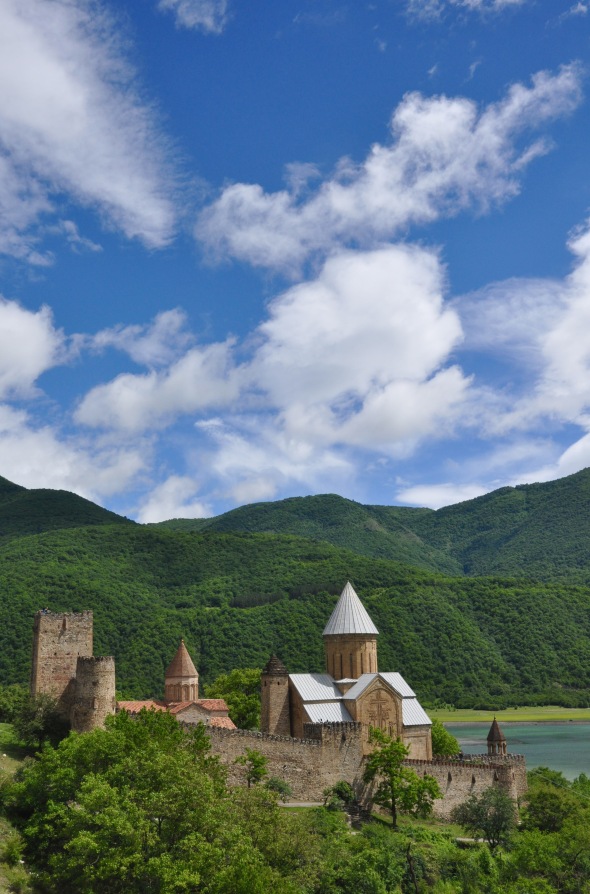
While the tallest tower was off limits, it was possible to climb the smaller one. I’ve no head for heights, so the narrow, worn steps missing a handrail had my heart missing a beat. With plenty of encouragement, my two younger companions got me to the top. Inside, each level was surprisingly spacious, with a fireplace and plenty of room to live. These towers would have been hiding places when the area was under attack. The castle’s dungeon was quite claustrophobic in comparison.

Heading north from Ananuri, the road took us past the ski resort of Gudauri and over the 2379m Jvari Pass. Next stop was the Georgia-Russia Friendship Balcony.
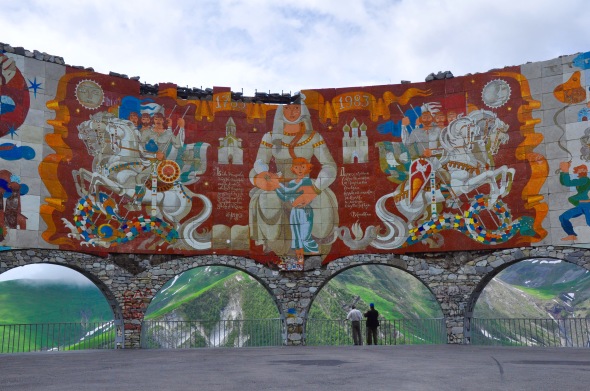
Our guide, no fan of Russia, was quick to point out that it was built in 1983 when Russia was still in charge and Georgian independence was eight years off. Despite its name, the monument was very tastefully done and its multiple balconies were perfect for capturing a shot of the dramatic mountain scenery which formed its backdrop.
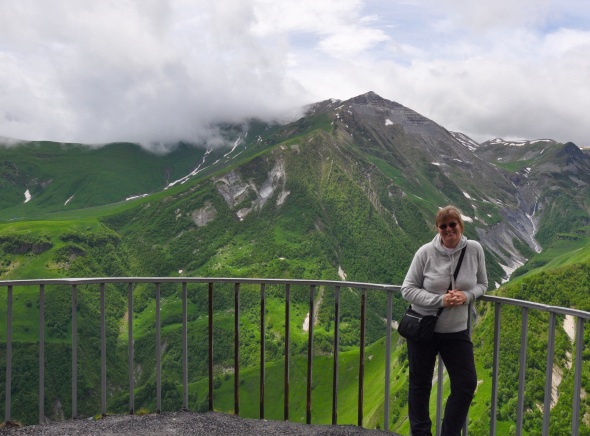
Our last port of call was right near the Russian border near the town of Kazbegi in a little place called Gergeti. Lunch had been arranged: my first experience of a Georgian stupa or feast. First, though, we had to make the local dumplings known as khinkali. Pastry had already been made and rolled; a spicy lamb filling had been preformed. All we had to do was assemble it, which involved lots of pinching of pastry and some rather dodgy looking shapes. Our hostess demonstrated a far higher level of skill, putting together a double decker khinkali quicker than we could pick up our cameras. They were delicious, though I resorted to using a fork instead of eating them the traditional way – bite off the top, drink the juice and then munch on what’s left. Beqa proved to be a good toastmaster too, ordering us to raise our glasses at regular intervals through the meal to God, peace, ancestors and women.
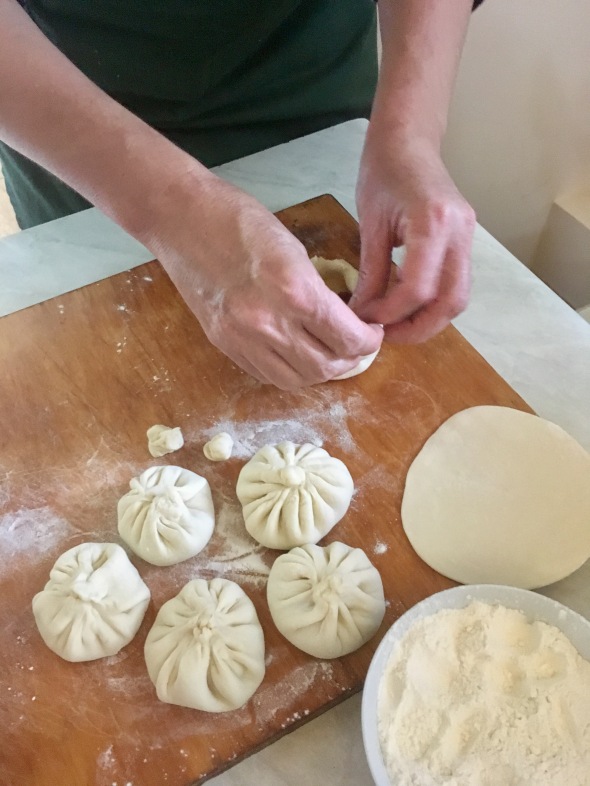
A hike had been planned. The Tsminda Sameba church, also referred to as Holy Trinity, is perched high on the mountain pastures above Kazbegi. Apparently there was once a cable car (those Russians again!) but the locals were none too impressed at having a sacred place defiled so they tore it down. A bumpy road led up to the church, but, said Beqa, it didn’t take much longer to walk up. Yeah right, if you were a goat maybe. The others walked, but told me later – as I’d suspected – that the path was pretty much straight up to the church and not an easy hike.
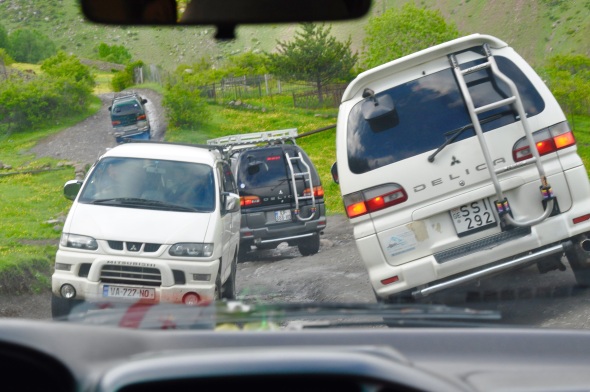
I took the minibus option, to my later relief, though that in itself was a hair-raising experience. Deep ruts characterised the gravel track for much of its length. In a couple of places the road had fallen away altogether. At the top, heavy rain made the pastures soft. I held my breath as we screamed across the grass, deep in some other vehicle’s tracks. How we didn’t get bogged down I don’t know. That fate was to befall someone else later, much to everyone else’s amusement.
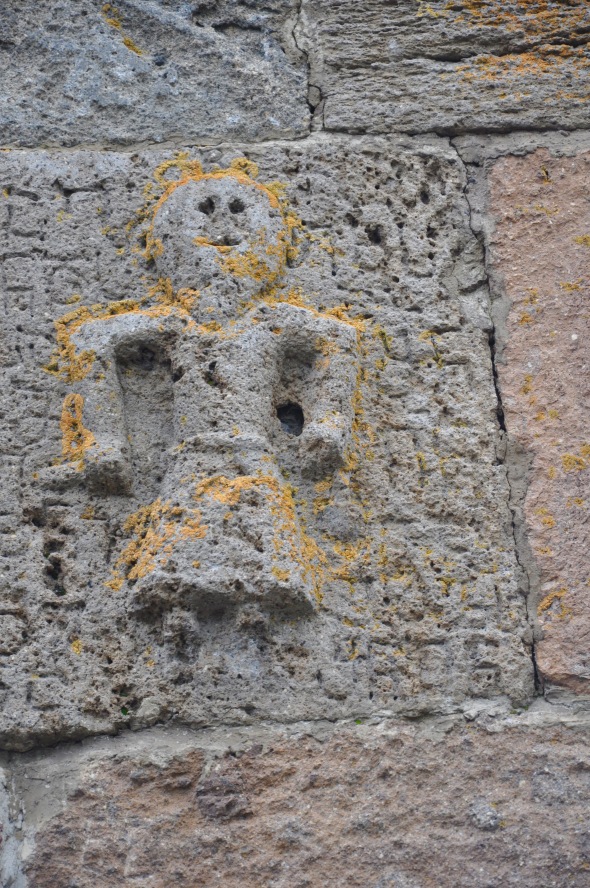
The church was as impressive as its setting, though cloud obscured the 5047m Mount Kazbek which can be seen on a clear day. Inside simple candles stood in sand illuminated the icons and other works of art that adorn this simple church. Despite the constant tramping of tourists’ feet (including mine, of course) it had a spiritual feeling, perhaps not surprising as it is a working church to this day. The forecast rain that had held off all day materialised while we were at the church and so we all headed down by minibus. Come down on foot when it’s slippery like that and you may as well be on a toboggan.
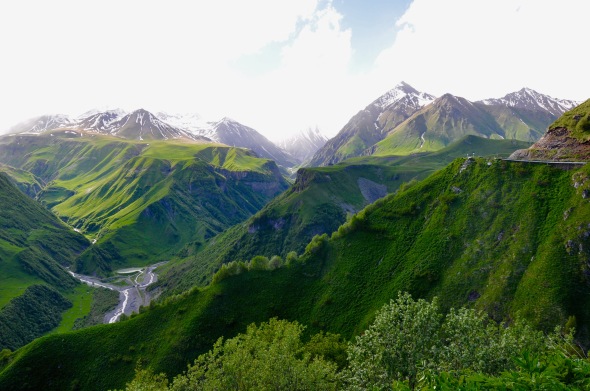
For more information on Envoy Tours and to book this Embracing Georgia tour, please visit their website:
Five favourite travel books: Asia and the Middle East
I’m not Asia’s greatest fan. Though you’ll find some of the world’s most fascinating natural and cultural sights, I find it irritating that they’re buried amidst jumbles of telephone wires and that reaching them often involves darting out in front of more motorbikes than it should ever be possible to encounter on one road. Nevertheless, I enjoy reading about the place, when I can filter out the bits that I don’t like to be left with a vibrant and enticing locale. There are exceptions, however, and one is most definitely Sri Lanka. I visited last year and cannot wait to return.
The Tea Planter’s Wife by Dinah Jeffries

It’s perhaps no surprise, therefore, to learn that one of my choices is a work of fiction. The story is enthralling but most of all, it captures the essence of the country in which it’s set. Here’s one of my favourite descriptions from the book:
“She took a deep breath of what she’d expected would be salty air, and marvelled at the scent of something stronger than salt.
“What is that?” she said as she turned to look at the man, who, she rightly sensed, had not shifted from the spot.
He paused and sniffed deeply. “Cinnamon and probably sandalwood.”
“There’s something sweet.”
“Jasmine flowers. There are many flowers in Ceylon.”
“How lovely,” she said. But even then, she knew it was more than that. Beneath the seductive scent there was an undercurrent of something sour.
“Bad drains too, I’m afraid.”
She nodded. Perhaps that was it.”
For some reason, though this scene takes place in Colombo, it feels to me like it should be set in Galle Fort. Quite possibly that’s because I grabbed the first train out of Colombo to head for the hill country and quite possibly because Galle Fort oozes history, spice and sewage from every cobblestoned street.
Hokkaido Highway Blues by Will Ferguson

My next choice focuses on an Asian country I also love: Japan. Travelling through Japan ought to have been a challenge, what with the different alphabet and all, but the Japanese go out of their way to make sure they can understand you, even if the conversation can get a little stilted. Here’s the author on the art of Japanese conversation:
“This was conversation by Non Sequitur and I was thoroughly familiar with it by now. The trick was to answer with equally arbitrary statements, until you sound like a couple of spies conversing in code.
“Yes, I can eat Japanese food. Baltimore is very big.”
“How long will you stay in Japan?”
“Until tomorrow, forever. It is very cold in Baltimore.”
He shook my hand. We smiled warmly at each other, clearly this was an International Moment.”
Fortunately, when I reached Kyushu, the lady in the tourist office at Yanagawa defaulted to technology when she realised our language abilities were sorely lacking. Video conferencing with a disembodied head on her computer, I was able to secure a map and a recommendation for lunch. The head seemed very disappointed that I had no further questions and I felt guilty as I thanked it and headed off.
Three Moons in Vietnam by Maria Coffey

Years ago, I found myself sleeping in Michael Caine’s bed. He wasn’t in it, of course – of course! – but he had stayed in that same room and slept in that same bed while filming The Quiet American. The bed was located in Hoi An, in an old Chinese chophouse that had been converted into a guest house. Despite that it heaves with tourists (more so now, I understand, than when I was there) I found Hoi An to be a wonderfully atmospheric place. Maria Coffey describes the place thus:
“It was no problem to while away some time in Hoi An. We explored the fish market along the river bank, where women vendors smoking fat hand-rolled cigarettes squabbled nastily and noisily with each other.”
I don’t remember any squabbling, but I do remember the noise.
Mirror to Damascus by Colin Thubron

On to the Middle East now, and a book set in a city whose history stretches back seven millennia, giving me hope that when the present conflict ends, the city will rebuild and restore. I visited shortly before the war kicked off and was enchanted by the place and its people. Clad in what felt like a mediaeval cloak, I marvelled at the Umayyad Mosque; free of my robes, I haggled in the tiny shops on Straight Street and never felt unsafe in the streets of its old town, even late into the night. In his book, Thubron tackles some of the city’s history:
“Some cities oust or smother their past. Damascus lives in hers.”
Here’s to when Damascus can live freely again.
The 8.55 to Baghdad by Andrew Eames

My final choice is another reminder that time changes everything. Mention Baghdad now and the Iraqi capital is still, to many, a place that instils fear instead of hope. But less than a century ago in 1928, none other than Agatha Christie made the journey from London to Baghdad by train. Her route took her through Syria, where she frequently stayed at the Baron Hotel in Aleppo. (Rumour has it that this historic hotel, which I visited but didn’t overnight in, has so far survived the war almost unscathed.)
Eames quotes the 1928 edition of the Thomas Cook handbook which “advises customers packing for Syria that “There is nothing better for travelling than a suit of Scottish tweed, supplemented by an ulster or other warm overcoat and a good waterproof.” The author had probably never ventured further than Ramsgate.”
Times change and for some places, that’s a good thing.
A beginner’s guide to the Trans-Siberian
I love a good train trip and the ultimate in rail journeys has surely got to be the Trans-Siberian in some form or another. If you’re thinking of crossing Russia by train, I’d suggest doing some background reading beforehand to get your head around what seems like a complex trip but in reality is more straightforward than it looks.
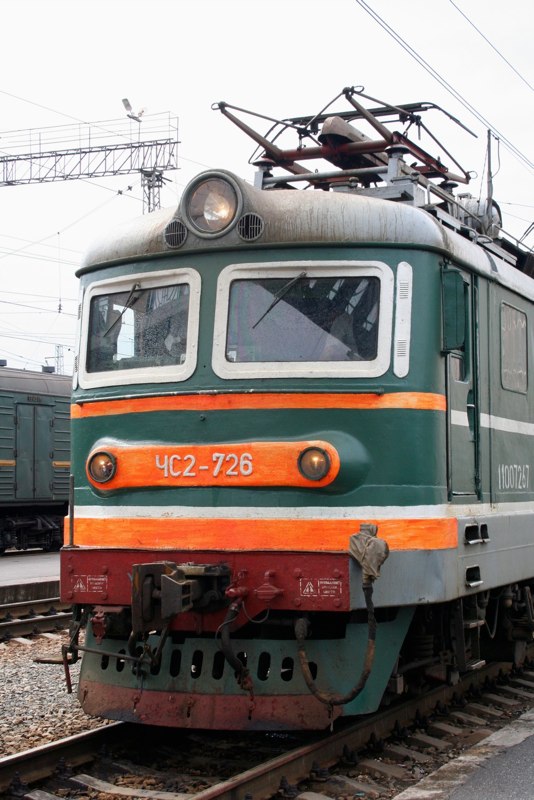
What is the Trans-Siberian?
Some people wrongly believe that the Trans-Siberian is one single luxury train. It’s not. It’s one of several long distance routes that stretch across Russia. Generalising a little, there are three main routes: the Trans-Siberian, the Trans-Manchurian and the Trans-Mongolian. Following each of these routes, it is possible to travel on a single train, but most people stop off along the way to explore some of Russia’s great sights – and see something of Mongolia and China as well, perhaps.

Trans-Siberian route (Courtesy of Ertmann and Profil CC BY-SA 2.5 via Wikimedia)
How long will I need?
To follow the classic route from Moscow in the west to Vladivostok in the east without stops will take 6 days. If you plan to do this, you’ll need to book the Rossiya train (number 1 or 2 depending on the direction you take). Extending your journey , you could begin (or end) in St Petersburg rather than Moscow, which are connected by an overnight train taking about 8-9 hours, or the high speed Sapsan train which covers the distance in about 4 hours. Personally, I’d allow at least a couple of days to scratch the surface of Moscow or St Petersburg, though it’s easy to spend more time in either. To cover the whole route with a few meaningful stops, it’s best to allow a couple of weeks, more if you can. And of course, you can do the whole trip overland with connecting trains via Paris and a route that takes you through Berlin, Warsaw and Minsk.
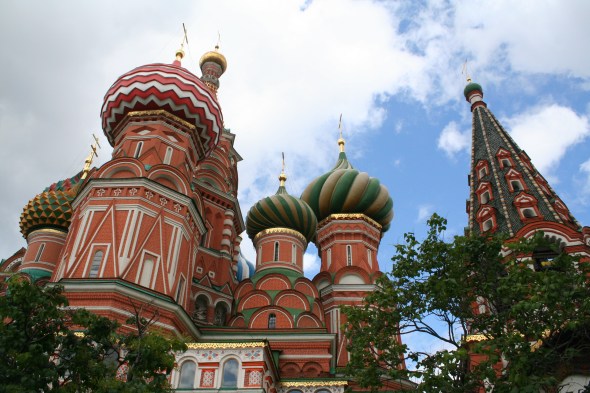
What was my itinerary?
Mine is, of course, by no means the definitive tour. On these three routes, it’s easy to tailor your journey according to your own personal preferences. I flew from London City airport to Moscow as at the time I booked, this worked out cheapest. When I planned my trip, I’d already been to Beijing, so I opted for the Trans-Mongolian from Moscow to Ulan Bator in Mongolia, leaving the Trans-Siberian on the map above at Ulan-Ude and heading south to the border. Read more about Russia here:
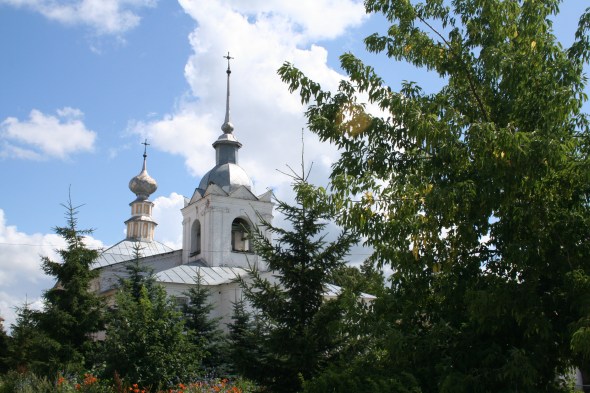
I stopped at Vladimir (for Suzdal and the Golden Ring) and then Perm (to visit one of Stalin’s notorious gulags). I skipped the popular stop at Yekaterinburg for reasons of time, though I’d like to visit next time, making the journey from Perm to Irkutsk in one go (a little under three days and over 3000 miles) as I wanted to experience a multi-night trip. I think that was enough: though you can book itineraries which involve staying on board the train for longer, I was definitely ready to sleep in a proper bed after two nights on the train and it was an amazing feeling to luxuriate in a bath and soak away all that train grime and staleness. There’s only so much wet wipes and dry shampoo can achieve!
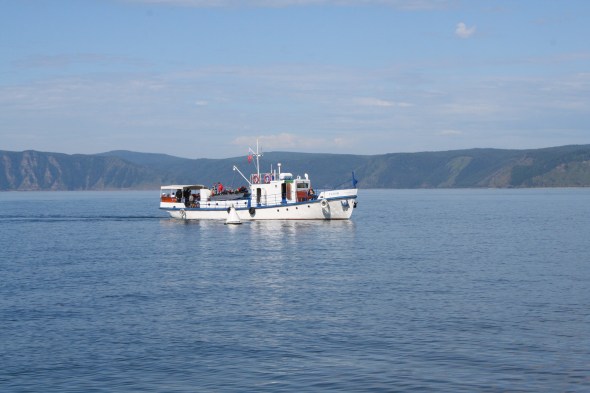
I had a couple of days at Irkutsk so I could visit Listvyanka at Lake Baikal. On a second trip, I’d build in more time here as it was beautiful – and frozen in winter, it must be a special place indeed. Reboarding a train, I crossed over the border to Mongolia. Having seen a little of the Mongolian capital I set off into the surrounding countryside for an unforgettable stay in a ger with the steppe nomads. Culture shock is an understatement! Read about it here:
I then retraced my steps to Ulan-Ude from where I caught a flight back to Moscow with budget airline S7 – a six and a half hour domestic flight which gives you some idea of the country’s vast size. This worked out considerably cheaper than finding a single leg fare to Moscow and home from UB. In all, the train tickets cost me about £500, with flights adding about £350 to the total. In all a couple of weeks’ holiday cost me around £1500 including basic hotels, meals and sightseeing.
Is it easy to do as an independent traveller?
Yes and no. I’m a big fan of independent travel, not only for the cost savings, but also for the flexibility it gives me to tailor the itinerary to suit my exact requirements. But I’m also not a Russian speaker and I felt I needed support with the booking process to ensure I ended up with the right tickets for the right trains. As you can see from the ticket below, it’s not at all easy to understand not only a different language but a different alphabet as well.
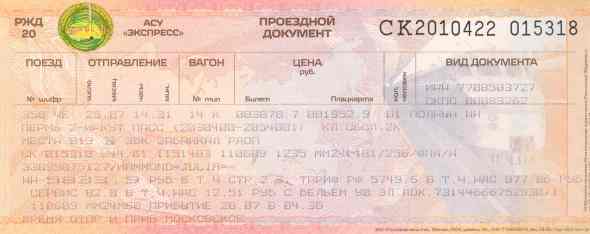
Due to the complexities of the railway ticketing system plus visa considerations, I decided to use a single specialist travel agent for those two aspects of my trip. As is my usual style, I booked my own flights, accommodation and most of my sightseeing myself; the exception was a private tour to Perm-36 Gulag which I also outsourced. I used a UK-based company called Trans-Siberian Experience (https://www.trans-siberian.co.uk) who were very efficient and helpful. The day trip was a 260km round trip from Perm, customised to my personal requirements and cost £170, the most extravagant part of my trip but more than worth the outlay.
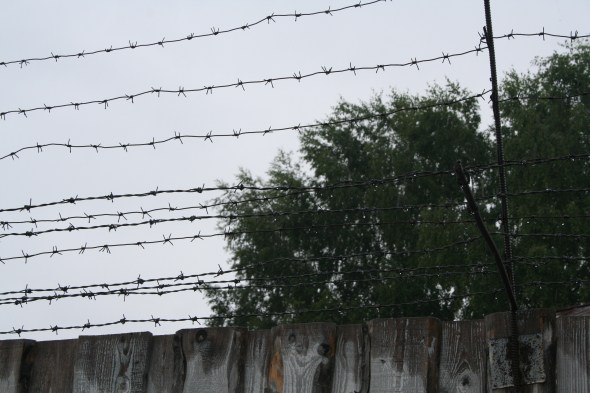
The company I used at the time was Real Russia.
http://realrussia.co.uk/Trains/Trans-Siberian
Their website has a dedicated Trans-Siberian section which enables you to check train times, suss out possible routes, check prices and order visas. It’s clear and in my experience the support offered by the team was excellent. All my tickets were sent in good time with English translations, the visa process was uncomplicated and every aspect of the trip that they’d arranged went according to plan – which was more than could be said for some of my own bits:
https://juliamhammond.wordpress.com/2016/11/06/lost/
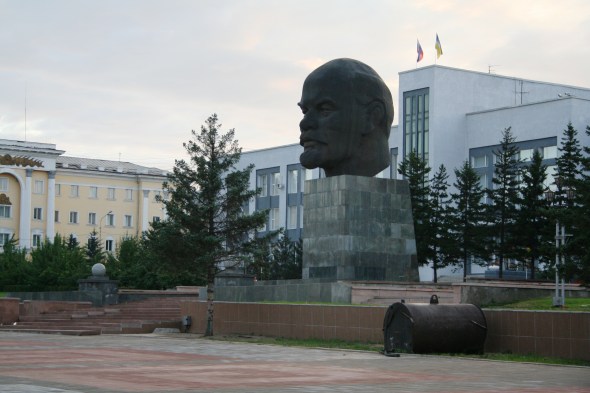
Since switching careers, I’ve done a lot of work for Just Go Russia, another London-based agency specialising in Russia, and they are always extremely efficient. If you’re looking for a tour, they do offer a wide range of options. You can find them here:
http://www.justgorussia.co.uk/en/transsiberian.html
Even if you don’t end up booking a tour, it’s a good way of getting an overview of the route and whittling down the options about where to stop off. Another source of information is The Man in Seat 61, my starting point for every train trip I’m planning outside the UK. There’s a good overview here:
http://www.seat61.com/Trans-Siberian.htm
What’s it like on the train?
Each of the trains I took was a little different. I “warmed up” on the short leg from Moscow to Vladimir and this was a regular seated train. That took away some of the nerves about checking I was on the right train, right seat and so on, without the worry of a missed long distance connection. From Vladimir heading east, some of the long distance trains leave in the middle of the night, so I opted for one departing early evening which arrived after lunch the following day. The overnight trains varied considerably in terms of speed and quality, something that is reflected in the price.
Another thing to factor in if travelling in Russia’s hot summer is that the air-conditioning is turned off when you stop at the border and the windows of such carriages don’t open; more basic trains have windows that can be pulled down to let in a breeze. (In winter, in case you’re wondering, the trains are heated, so prepare to swelter on the train and freeze on the platform.)
Some compartments featured luxury velour seating, others were more basic, such as the one I travelled on from Perm to Irkutsk. In my opinion, that didn’t really matter as I followed the lead of my compartment companions (all Russians) and stretched out on a made bed all the way rather than converting it back to a seat. When I did the Irkutsk-UB leg, the train was more luxurious, those sharing the compartment were all tourists like me and we all sat up during the daytime. To be honest, I liked the local approach best.

In all cases, I opted for second-class tickets which provided comfortable accommodation though no en-suite facilities. The logic to this was that as a solo female traveller I didn’t want to be alone in a compartment with a single man and the first-class compartments came as two-berth not four-berth kupe. I shared with three men from Perm to Irkutsk but as everyone sleeps in their clothes nothing untoward happened and actually I was well looked after by one of them in particular, a Russian army officer heading on to Chita.
Border crossings can be daunting, but knowing my visas and documentation were in order was helpful. Formalities vary and the immigration officials will make it clear whether you are to remain on board or not. It is normal for them to take your passports away; that can feel stressful but having a photocopy of your papers is a comfort. Note that the Chinese trains run on a different gauge so the carriages have to be lifted onto new bogeys.
What should I pack?
As you are likely to sleep in your clothes then picking something comfortable like jogging bottoms and a loose T-shirt is a good idea, though clearly you won’t win any fashion awards. Who cares? I found it helpful to pack changes of clothes (socks, underwear and T-shirts) in a day pack so I could store my suitcase under the bed and forget about it.
In terms of footwear, most of the locals seemed to favour blue flip-flops with white socks. Slip on shoes of some form are convenient to help keep your bedding free of dust picked up from the floor. The provodnitsa, or carriage attendant, will come round with the vacuum cleaner each day and will chastise anyone who’s made a mess, so keep the compartment clean.
It’s a good idea to book a lower bunk as you are then sleeping on top of your bags, affording grreater security than the open stow holes up top. It’s possible to lock the door from the inside, but not from the outside, so when you visit the bathroom it’s reassuring to know that your belongings are out of sight. Having a small handbag to carry passport, money and other valuables – like train tickets! – was also helpful. When I’m travelling by overnight train I always take a lockable, hard shell wheelie; it’s narrow enough to wheel down train corridors and light enough to lift from the platform, but also more robust than a slashable canvas bag. A determined thief will steal or break into anything, so it’s about making yourself a more difficult target than the next passenger.
When I travelled, the bathroom facilities were pretty basic so I would definitely recommend taking lots of wet wipes and also a can of dry shampoo. It’s amazing how clean you can get yourself in a small cubicle with just a small sink. These days, most Russian overnight trains have a special services car with a pay-to-use shower which would have been great. You do need your own towel, but I use a special travel towel which folds up small and dries fast. I won mine in a competition but you can get something similar here:
http://www.nomadtravel.co.uk/c/261/Travel-Towels-and-Wash-Bags
In terms of sustenance, the provodnitsa also keeps a samovar boiling from which you can get hot water to make tea, noodles or soup, so I packed some of these too. Some were more accommodating than others; if you get a grumpy one, she’ll lock her door or disappear for hours at a time. I was lucky to have a smiling provodnitsa on my longest leg, which made a difference. The Russians travelled with plenty of food which they generously shared, most memorably omul, a kipper-like smoked fish common in Siberia.
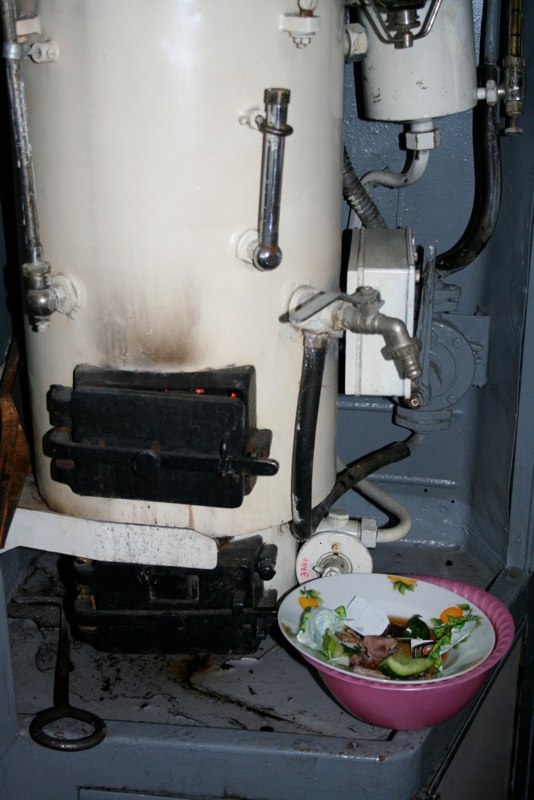
There’s a restaurant car as well and at station stops, despite the queues there was often enough time to nip off to buy food from the platform vendors, so carry enough small change for these kind of purchases. Finally, it’s a long way. Although batteries can be charged (though sometimes in the corridor on older trains) I’d pack an old fashioned paperback to read or carry a pack of cards to entertain yourself. Take family photos – in my experience it’s true that Russians love to share theirs. It’s also true that a bottle of vodka can break the ice though some compartments sounded more raucous late at night than others – the luck of the draw! I also had a copy of the Trans-Siberian Handbook (as opposed to the Lonely Planet which I would usually take) because the level of detail about what you’ll see out of the train window was much better.

Anything else I should know?
One of the things I was most worried about before I set off was missing a train or missing a stop. In the event, neither of these were an issue. At the station, huge signboards helped identify where the train might pull in and showing the ticket and smiling a lot got me escorted to many a carriage door. Pretty much without exception, I found the Russian railway staff very helpful. The trains used to run on Moscow time which could be a little confusing at first, but there are timetables up in the corridors and even on the longer legs I usually knew roughly where I was. Since summer 2018, they’ve switched to local time and are showing both times to help ease the changeover.
A phrase book helped me decipher the Cyrillic alphabet; my technique was to focus on just the first two or three letters rather than trying to remember the whole name. Thus Suzdal became CY3 etc. The train provodnitsas were very good at giving their passengers plenty of warning when their stop was imminent and so I managed to get across Russia without incident.
I never felt unsafe during my trip but I would say that you need to be a bit savvy when it comes to your valuables. Keep your passport and money with you, don’t flash around expensive cameras or laptops but equally, don’t get too paranoid.
Would I do it again?

Yes! The scenery at times was monotonous but that was missing the point. The adventure was in the interactions with people on the train; the sightseeing came after I alighted at the station. Next time I think I’ll begin in St Petersburg, detour to Kazan and make that visit to Yekaterinburg before heading east to Vladivostok. Now where did I put that Trans-Siberian handbook?
Checking in to come home, Russian style

I stood, motionless, in the middle of the crowded space. People came and went around me. Some queued, others waited patiently next to piles of luggage, still more hugged relatives in emotional goodbyes. For all the world, it looked like a regular airport, going about regular airport business. I reckon I’ve been to thousands of airports in my time, striding confidently across halls, dealing with airport officials, polite on the outside even if seething on the inside at petty officiousness and stupid rules. I’m no fan of airports, you understand, but they are a necessary evil to get me to somewhere exotic and exciting.
But this one had me stumped. For the first time, I couldn’t find check-in.
How do you lose check-in? How is it possible not to see row upon row of impersonal white desks and grubby baggage belts, with their maze of retractable queue barriers that make you pace this way and that like a caged lion? How do you lose the planeloads of people that must have got to the airport before you as your flight is going out late afternoon?
Like a detective, I scoured the room for clues. The space was devoid of signage, even in Russian. I couldn’t see anyone holding a boarding card and most people still had large suitcases. Was I in arrivals, I wondered? I headed back outside. The sign read “Departures”.
Back inside, I started to ask fellow passengers but drew only blank looks. Pointing at my suitcase and shrugging my shoulders in a kind of a “what do I do with this?” mime wasn’t working. Pointing at the airport page in my phrase book and again at my suitcase wasn’t working. I glanced at my watch. At this rate I’d miss my plane.
Half an hour before, I’d been so relaxed. Russia, so daunting at first, had lost its ability to intimidate. My vocabulary was still limited to a dozen words (and only then if “Big Mac Meal” counts) but I’d learnt to match the Cyrillic alphabet to their Latin translation which was enough to make a quiz game out of most days’ activities. The people I’d met on the numerous trains and buses that had transported me 3500 miles across the Russian steppe to Ulan-Ude had, without exception, been helpful and charming. For three days, Aleksandr, the Russian Army officer headed for Chita, had fed me omul for breakfast on the slow train to Irkutsk, asking nothing in return save for a compliment about his red-haired wife in the photo album he carried in his kit bag. That same smoked fish hung in the market in Listvyanka, a tumbledown village on the shores of Lake Baikal. An elderly woman, head covered with a colourful babushka, pointed out the sights from the bus and used my phrase book to explain she was off to buy crystals.
I thought about her, in the airport terminal, and cursed my phrase book. What editor would include the word for crystal but not check-in? It was hot in the hall, and I wiped my brow with the back of my hand. I was starting to panic. The voice inside my head told me to calm down. I still had twenty minutes before check-in closed. There was a queue forming at the far side of the room and I joined the end of it. My question about whether this was the check-in queue leapfrogged up the queue like a Chinese whisper. Back came the answer – no.
No? No?!!!
I turned away from the queue and the mutterings of its occupants. I was running out of ideas. Now I started to mentally re-plan my journey home. If I couldn’t fly back to Moscow, I’d have to take the train, a four or five day trip. I’d miss my Moscow connection and have to pay for a new flight. More than that, I’d have to suffer the humiliation of telling friends and family the reason I’d missed my flight and suffer months of good natured ridicule.
Indignant, I thought to myself that no airport was going to beat me. I scanned the hall again. Along one side, there was a blank white wall. It looked like a recently-erected partition, free of scuffs and scratches, though I couldn’t be sure. I wheeled my case over for a closer look. On inspection, there appeared to be a concealed doorway. I knocked and waited. A businessman in a hurry pushed his way past me and through the door. I looked through, of course, to find out what was behind it.
There before me stood row upon row of impersonal white desks and grubby baggage belts. I made check-in with five minutes to spare.
When it isn’t OK to post a bad review
Recently I stayed in a hotel very close to Colombo’s airport, the Otha Shy Airport Hotel. The Sri Lankan capital is some distance away, and as I had a late arrival followed by a morning onward flight, I was more focused on location than quality. I took a cursory look at some reviews but didn’t bother with much more. The price was reasonable, it looked clean and I wasn’t going to have to spend an hour in traffic worrying whether I’d miss my flight.
On arrival, at nearly midnight following a delayed flight, the person manning reception was pleasant and efficient. He gave me a complimentary bottle of water and a working WiFi code. The room was spotless and I had a comfortable night’s sleep. I woke reasonably early and half an hour or so later I became aware of some persistent hammering from the floor above. I wasn’t too worried, as I was about to check out anyway.
On check out, the reason became apparent: the ground floor was complete but the first floor was a scaffolding-clad building site. Never mind: the owner was still charm personified and despite his late night, gave me a free lift to the airport about ten minutes up the road.
Curious, I checked the reviews. Most were very positive. Here’s what Trip Advisor has to say: https://www.tripadvisor.co.uk/Hotel_Review-g2550421-d8656795-Reviews-Otha_Shy_Airport_Hotel-Katunayaka_Western_Province.html#review_361396695 and here are the reviews on Booking.com: http://www.booking.com/hotel/lk/otha-shy-airport.en-gb.html#tab-reviews.
The owner was very enthusiastic about his expansion plans and convinced that the building work would be completed this month (April 2016). He was the kind of man you want to root for; he had a dream and was determined to realise it. What’s nice is that the lack of poor reviews means that the people that have stayed there while construction is underway get that. I can’t imagine there being much leeway in his budget, so he’d need bookings for his ground floor rooms despite the noise or disruption. A few bad reviews could scupper his dreams.
I’m not in the habit of destroying someone’s chances to improve themselves. Mr Nalaka, I wish you every success with your business and if I return to Sri Lanka, I’ll be booking my old room.
A beginner’s guide to Sri Lankan railways
One of the unquestionable highlights of touring Sri Lanka is a journey by rail. The network is extensive and links many of the country’s must-see destinations. There are many tour companies who offer itineraries based around train travel, but these can be expensive and prescriptive. If you prefer to go it alone, here’s my guide to getting around by train.
Planning is everything
Although trains link many of the country’s cities and towns, there are gaps. I planned a circular route beginning at Colombo Fort station, heading inland to Kandy, then up into the highlands to Nanu Oya (for Nuwara Eliya) and then on to Ella. Separately, I rode the stretch of track from Weligama to Galle from where you can catch a train back up to Colombo.
Arranging a driver for the gaps
To visit the lofty palace at Sigiriya, I hired a car and driver for the day, stopping off on the way back at an elephant sanctuary. There’s no rail link between Ella and the south coast either, so again, I hired a car and driver. This time I stopped off half way to take an elephant safari at Uda Walawe. Although I could have picked up a train at Matara, I chose to book the driver to Galle so I wouldn’t have to clock watch all day. Drivers were arranged as I went along, either through the hotel or via a taxi driver at a station. Costs aren’t excessive by UK standards. To travel from Galle to the airport via the fast expressway costs around 11000 rupees including tolls (about £55).

Seeing the elephants at Uda Walawe requires a car as the rail network doesn’t extend to that part of the country
To book or not to book?
Some trains can be reserved online and you may wish to book these trains for the beginning and end of your trip if you want to be sure of making connections. Depending on how long you allow at each stop, you should be fine to just purchase your other tickets as you go along, unless you’re travelling in a large group or at a holiday time.

Tickets are easily purchased on the way; my advice is to call in at the station a few days ahead of travel
Where did I get my tickets?
I caught the Rajhadani Express from Colombo Fort to Kandy; a reserved seat in air-conditioned first class cost 1100 rupees (less than £6). It was straightforward to book online. Seats become available two weeks prior to departure and you just need to make a note of your reservation number. On arrival at Colombo airport, as you exit into the tour and taxi desk hall, you’ll see a Mobitel counter right by the door. They will print your ticket for you on production of your reservation number and passport. Alternatively, you can do this when you get to the station.
It wasn’t what you’d call luxury by European standards but the fat leather seats and padded arm rests were comfortable. The train lurches around a lot so whichever carriage you opt for it’s not going to be a relaxing ride, however. Expo Rail bookings work in a similar way to the Rajhadani Express with their own dedicated website. However, departures with these two companies are limited and may not fit in with your plans. You can check the online schedule on the Sri Lanka Railways website for a full list of trains operating on the days you wish to travel.
Booking regular trains
Whether or not you can book other trains in advance depends on whether the train has any reserved seat carriages or not. Following up on a recommendation from the Man in Seat 61’s excellent website, I booked the Kandy to Nanu Oya leg with Visit Sri Lanka Tours, a UK based travel agent. They were efficient and most importantly, the reservation number they sent me was recognised at Kandy station when I went to collect the ticket. Obviously they charge a premium for this service, but their rates were not exorbitant.
Reserved carriages can be first, second or third class. First class isn’t necessarily air-conditioned but can be. Don’t expect luxury; it’s more about space than quality. Second class usually has four seats per row, overhead fans and windows that fully open, while third class is more crowded with six seats per row.
When I booked the train from Kandy to Nanu Oya second class was full so I bought a first class ticket for 1000 rupees (about £5). I was told that sometimes additional reserved seating is released at the last minute at a premium price. If at first you’re told the train is full, it might therefore be worth asking again the day before. This strategy worked for a London couple I met on the train whose driver procured second class reserved tickets at the last minute.
For at least half the journey I rode by the door as it was more social and I could take better photographs from the open doorway. I tried not to think about health and safety too much, but definitely held on tight. One jolt and I could have been offering myself as extra labour in a trackside tea plantation.
From Nanu Oya to Ella a first-class observation car had been attached to the back of a train mostly hauling freight but with a couple of unreserved passenger cars also. I wouldn’t say the view out of the dirty observation window was much to write home about, for photographers at least, but the windows did open fully making for some fantastic scenic shots from my seat and a welcome breeze too.
On the Weligama to Galle hop, I just bought a ticket on the day as there was no allocated seating on that local train. It cost 60 rupees (about 30p) and I just found a seat when the train pulled in.
As it was a middle of the day departure, it wasn’t crowded, but on some peak time services the advice from the station master was that to get a seat, you may have to fight. I didn’t like the sound of that for the Galle to Colombo leg of my trip which I would have had to make at rush hour with luggage, so I opted to hire a car and driver instead. Had my schedule permitted, I could however have pre-booked an afternoon train with a reserved seat, just not a morning one.
And one last piece of advice…
All tickets are collected on exit so make sure you keep your print out (reserved seating) or little cardboard ticket (regular seating) safe throughout the journey. My ticket was checked en route by an inspector on the Rajhadani Express but not on subsequent trains.
Elephant spotting in Uda Walawe
Uda Walawe National Park is home to the largest concentration of elephants in Sri Lanka. It was created in 1972 and centres on the Uda Walawe reservoir. Although in March there was quite dense vegetation on the way in to the park, it thinned by the lake shore and thus made it easier to see wildlife. At first, sightings were limited to a few monitor lizards and birds, neither of which excited me much. But at the lake, a couple of herons were pottering about in the shadows seemingly oblivious to the crocodile skulking behind them. In the middle distance, some water buffalo wallowed.
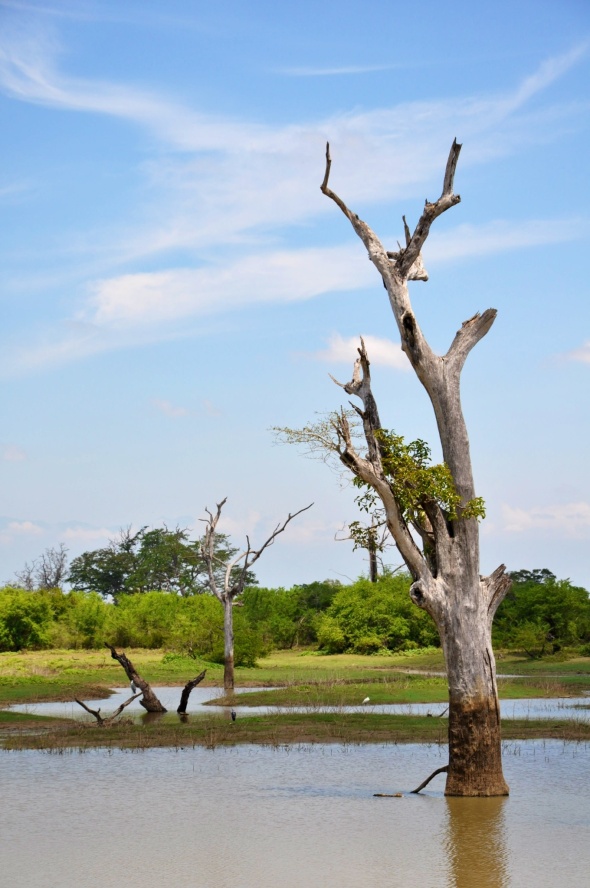
But I’d come to see the elephants, said to number around six hundred, making it the best place to view them in the country. Easily seen year-round, herds can number over fifty but the largest family group I saw was eleven, still impressive. Our first sighting, a mother with two juveniles, was entertaining. They took a stroll down to the lake where the youngest couldn’t wait to relieve himself in the water. Toilet taken care of, it could bathe happily before the trio wandered back into the bush.
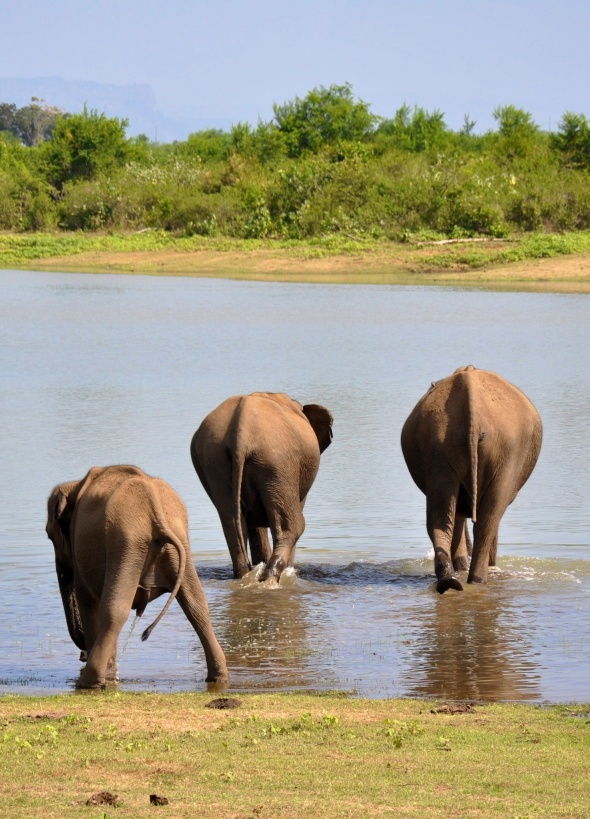

As we drove along the lake shore dirt track, a lone adolescent passed us at close range, near enough to leave us in no doubt that he was a male. Unperturbed by the camera clicking, he ambled past towards the lake.
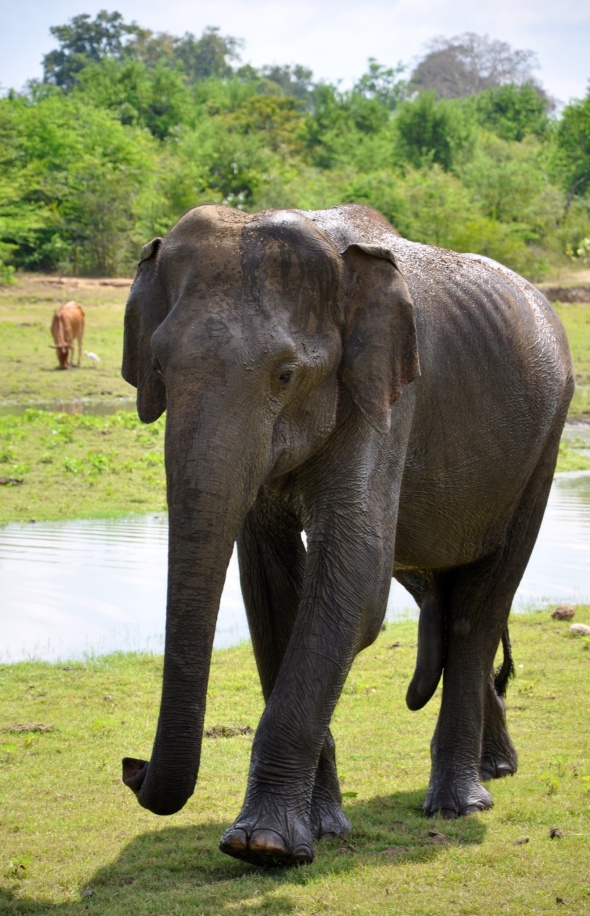
In the vegetation, the thick leaves can provide excellent camouflage, but the guide was equally skilled in locating the wildlife. This was our closest encounter, though fortunately the creature was very docile and didn’t warn us off.
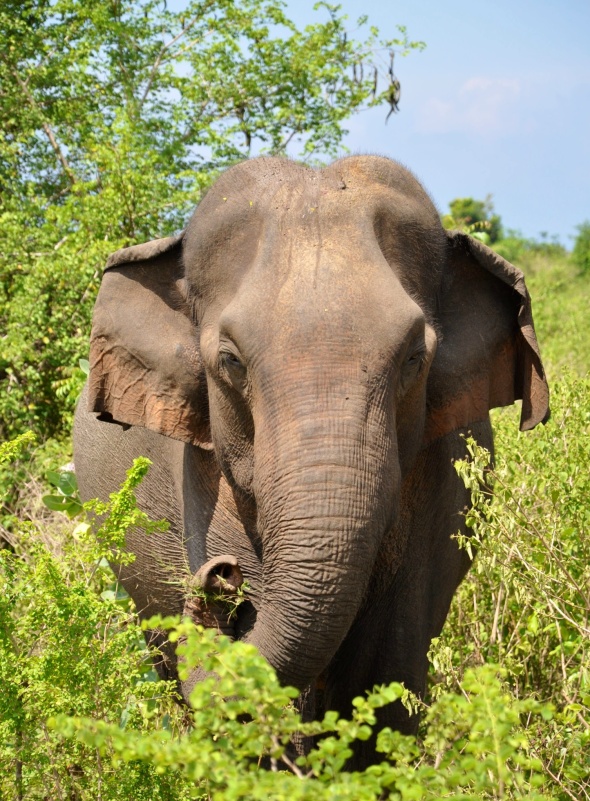
A herd of eleven including two babies was the highlight of the drive. One infant looked to be just three months old or thereabouts, with the other perhaps six months. It’s always delightful to see how the older members of the family protect the youngest when they’re on the move, keeping the babies close by but placing themselves between infant and safari vehicle just in case.
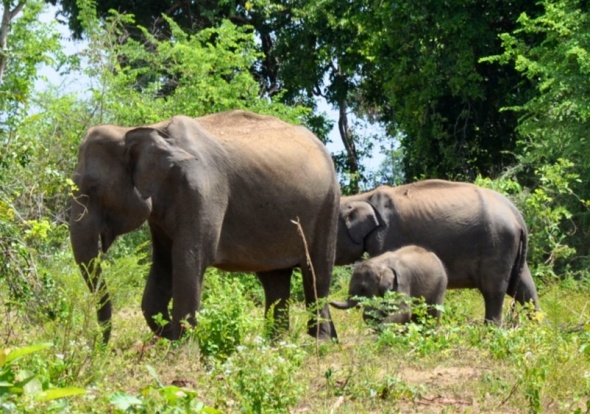
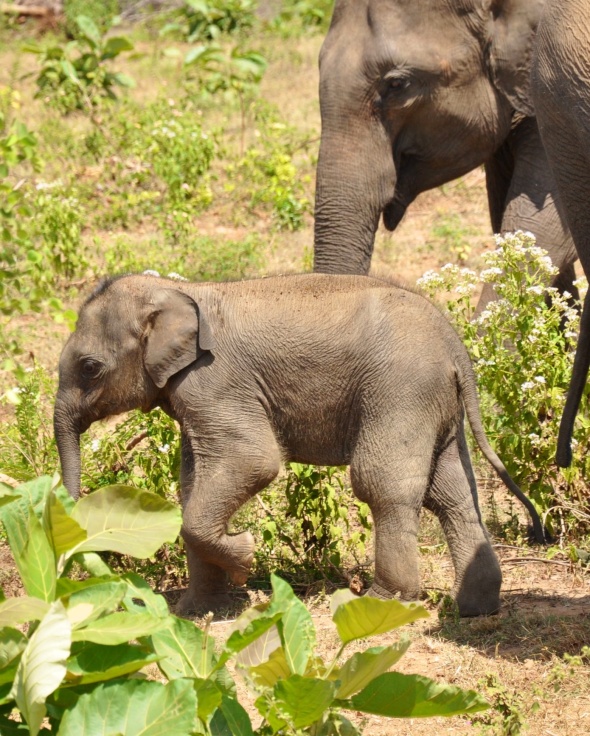
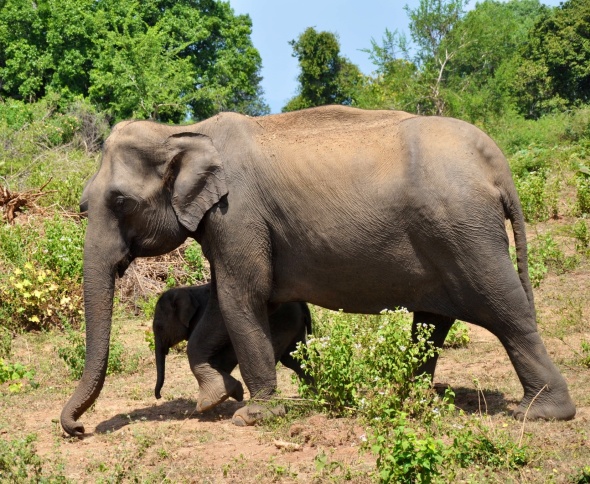
There are other species to keep the elephants company, and I saw plenty of water buffalo and in the distance, a couple of spotted deer. A family of monkeys swung in the branches of a tree and amongst the birds I recognised were a grey heron and a kingfisher by a lake so full of green algae it was hard to decide which was the most vibrant in colour. Leopards are said to be present in small numbers though I wasn’t lucky enough to encounter one.
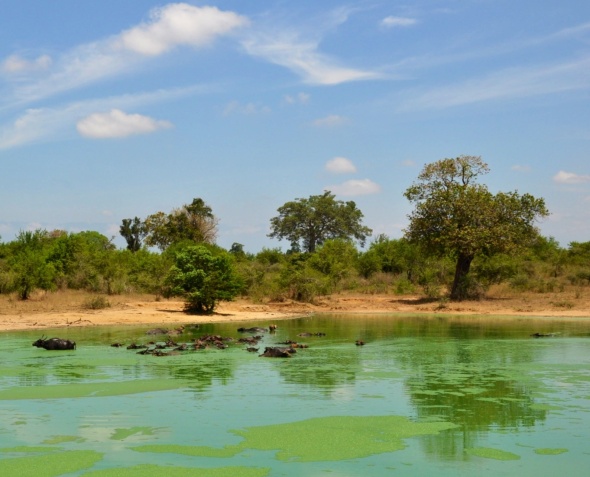
While some people stay at one of the nearby hotels or guesthouses, I took a game drive en route from Ella to Galle. The three hour stop was a welcome diversion from sitting in the car. My driver arranged a safari jeep within minutes and it cost about £45 for a private excursion with Wild Safari Service including all entrance fees. Be prepared to haggle.
Tea time in the Hill Country
I expected tea picking to be difficult. Working in the sun on scarily steep slopes for eight hours wouldn’t be my choice of job and certainly not for the 600 rupee (£3) daily wage that these industrious women earn.
Learning that the Heritance Tea Factory offered a tea plucking and tasting activity, I jumped at the chance to try my hand. The slopes carpeted with squat tea bushes were relatively gentle compared to those I’d seen from the train on the way in and thickening cloud promised to deal with the heat issue.
The staff at the Heritance kitted out their small but enthusiastic team of volunteers in suitable attire: saris for the women and sarongs for the men. Raising my arms, my dresser tied a string snugly around my waist, into which she tucked a carefully pleated sari. Six metres of fabric is expertly tied to create an elegantly flowing dress, pinned across one shoulder to ensure modesty isn’t neglected.
Elegant, that is, until I moved. Sadly walking in a long dress without tripping had never been a skill I’d mastered and squeezing my way through the tiniest of gaps between tea bushes only compounded my clumsiness. Unhooking me from a stray piece of barbed wire, our guide led me to the plucking area and demonstrated which leaves to pick.
Get it wrong and the tea will be useless.
As I started to pick what I hoped were the softer, greener leaves I wished I’d paid closer attention to those deftly thrown into the basket by the expert. My basket, with an optimistic capacity of 3kg given we were only out here for half an hour, looked pathetically empty, despite the guide’s surreptitious efforts to sneak a few handfuls of her leaves in when my attention was diverted.
The bag attached with a wide canvas strap across my forehead. As I bent over to pick, it swung a little, needing the weight of some leaves to hold it steady. That strap seemed to have a mind of its own, alternating between slipping down onto my glasses and wriggling up to form a Sixties’ style beehive. Eventually, I gave up and balanced the basket on the ground. It wasn’t quite what was expected but at least I could fling in a few more leaves before my shift ended to save face.
It was hard to concentrate given the beauty of the landscape surrounding the hotel – and indeed, it’s own well-tended gardens. The Heritance Tea Factory has a long history. Its original owner was a man called William Flowerdew who bought the land in 1879, only a decade or so after tea bushes were introduced to Sri Lanka by Scot James Taylor.
Flowerdew named his factory Hethersett, producing around half a million kilos of tea each year for decades.
The factory buildings were modernised in 1937 but the factory closed, no longer economic, in 1973. Fortunately, it soon underwent a sympathetic restoration: much of the factory machinery remains in situ to make this what surely must be a unique hotel and, with attentive staff, a delight in which to stay.

The hotel has its own tea bar; flavour and strength are determined only by how small the leaves have been ground
The fact that they serve a decent cuppa – well, that’s just a bonus.
Sigiriya
Sigiriya, or Lion Rock, has been on my travel radar for over three decades.
In those days, there were no travel magazines littering my desk, nor could I surf the web to take me to exotic destinations over a cuppa. (How did I manage?) What I did have, however, was a passion for Duran Duran and in 1982, the band released the video for Save A Prayer. Watch it here:
It was shot on location in various parts of Sri Lanka, among them Sigiriya, which that same year was designated a UNESCO World Heritage site. As the camera panned, I remember watching and wondering how they got up there as the rock face looked impossibly steep.

Sweeping the sand off helped a little with grip on the smooth stone but wouldn’t want to do this climb in the rain
It is. And unfortunately for me, so too were the steps leading to the top. Slippery stone gives way to spiral metal staircases, the gateway to some impressive frescoes of bare-chested maidens. To my horror, I then had to descend a spiral staircase before climbing again. That’s fifty steps up and the same back just to reach the same height!
Spurred on by teenage dreams, and determined not to be put off by internet-induced nightmares, I made the climb this morning. With several terraces on which to recover my breath, my knees didn’t ache anywhere near as much as I feared.
But despite an early start, I was sweating profusely as the temperatures flung themselves ever higher and the humidity permeated like a warlike invader. By the time I got to the top I was in no state for a selfie, though I promise you the photos you’ll see here are all mine.
This lofty archaeological site is thought to be the ruins of the kingdom of Kassapa dating from the 5th Century. Those topless women could well have been his concubines. At the summit, his palace is all but gone, a few tumbledown walls and a pond full of water are the only surviving remnants of a once grand structure.
But it’s the view that takes your breath away, not the strenuous climb. See for yourself.
I overheard someone near the bottom saying the descent was harder, and this sign at the top didn’t help my confidence. Actually it was fine, and a whole lot less hard work than the ascent.
Looking at the crowds building, it was definitely a good idea to climb early. The site opened at 7am, not 8.30am as stated in my Lonely Planet.
Travel outside your comfort zone
American intellectual Clifton Fadiman is quoted as saying:
When you travel, remember that a foreign country is not designed to make you comfortable. It is designed to make its own people comfortable.
They’re wise words. On the road, it’s all too easy to become indignant when things aren’t going your way. Two decades ago, I got somewhat cross when barred entry to what I hazily remember as a fort in Old Delhi (though it could well have been a mosque). I wanted to climb a tower to take in a view, arguing that my gender shouldn’t influence where I could and couldn’t go. Did I have the right to do that, if it wasn’t my country? Probably not, though such misogynistic attitudes have put me off returning.
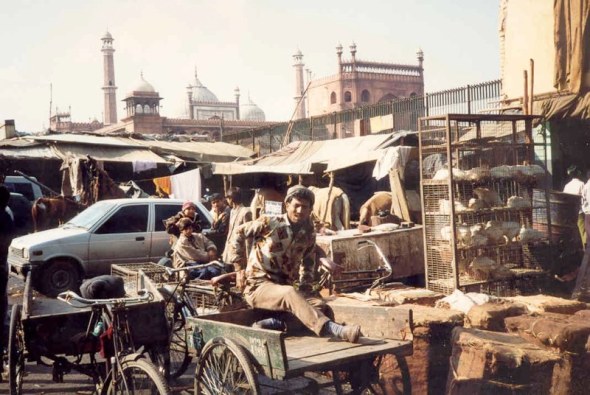
Old Delhi
Despite such a poor experience travelling around India as a solo traveller, I’ve tried to challenge myself as I’ve ventured further afield. Weaning myself off package tours was as much a case of economic necessity as anything else, but choosing countries and regions off the beaten track where tourists are as rare as a white moose has kept me on my toes. Buying a train ticket in Ukraine via sign language? Check. Getting to grips with riots and a transport strike in Haiti? Check. Overnighting in the world’s most dangerous city without being shot? Check. That’s San Pedro Sula in Honduras if you’re wondering and yes, the barbed wire barricade at the end of the street was a little off putting when it came to sleeping soundly in my bed.

Port au Prince bus station
I’m soon off to Sri Lanka. Everyone I know who’s been says it’s wonderful and the pictures of the hill country through which I hope to journey by train look idyllic. But someone reviewing a train trip on a web forum was complaining that a Sri Lankan man ignored her reservation and threw her bag off the seat, forcing her to stand for the entire journey. If that story is true, Clifton Fadiman’s words take on a whole new truth. And there’s just that nagging voice in my head that reminds me that we just wouldn’t stand for that kind of treatment in Britain. Wish me luck!
The Devil reads Pravda?
Putin’s “Don’t mess with me” attitude and his questionable actions and policies have given Russia back its bad name. But don’t let that put you off visiting: Russia’s an absorbing and diverse country which deserves your attention. The reality of a holiday in Russia is is as far removed from the country’s political reputation as it gets: http://travelexperts.justgorussia.co.uk/2015/10/13/whats-it-really-like-to-holiday-in-russia-nowadays/
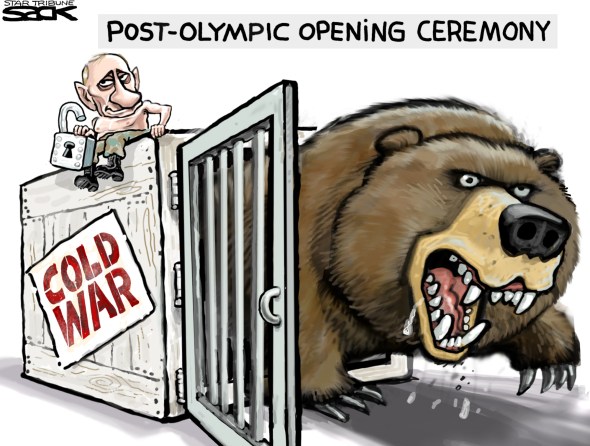
Steve Sack, Star Tribune
When I took a rail holiday following the Trans-Mongolian route, I had no idea what to expect, but my most enduring memory from that fortnight is of the warmth of the Russian people. From the army officer who shared his food and photos of his wife to the little old lady who made sure I got the right bus back to Irkutsk from Lake Baikal, I experienced a welcome that, if I’m honest, I didn’t expect. You can read more about it here: http://travelexperts.justgorussia.co.uk/2015/11/03/russia-by-rail/

Family time by Lake Baikal
Really, the only gruffness came from the guards at Lenin’s Mausoleum who shooed me on when I paused just a little too long to look at that waxy body. The provodnitsas on my trains ran a tight ship, for sure, but they needed to make sure everything ran smoothly – who wants to witness an altercation from a sleeping compartment when you didn’t plan to get off the train for three days?
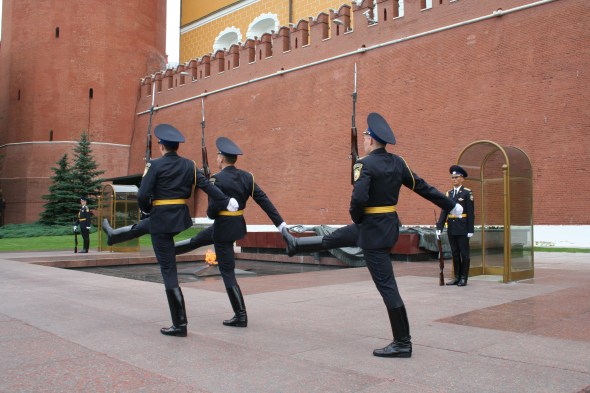
High kicks of which a dancer would be proud
For me, Russia was a country of immense beauty; from Suzdal’s magical churches to the tumbledown wooden shacks of rural Siberia, the country presented photo opportunity after photo opportunity.

Suzdal is packed full of historic churches
Moscow was fascinating, and aside from rather wet walk through flooded streets on arrival, a city I enjoyed immensely. The language and alphabet are different, but didn’t prove an insurmountable problem, and there are plenty of companies out there to assist with booking train tickets and securing visas.
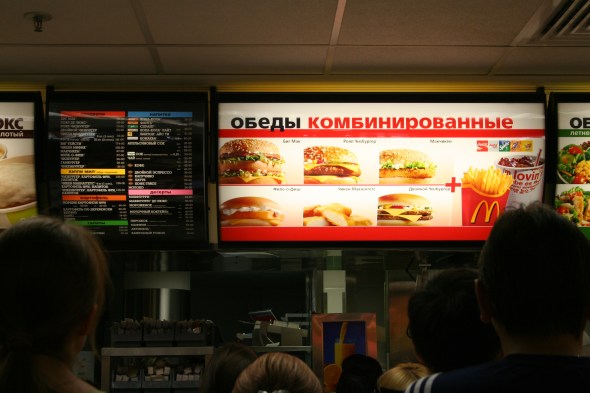
If all else fails, look for somewhere with a picture menu

Or an English menu!
My advice is to go. You’re hardly likely to bump into Putin in a country that size. Why not read some more of my blogs for Just Go Russia and see what you’d be missing. Here are just a few:
A diverse country http://travelexperts.justgorussia.co.uk/2015/10/12/dobry-den-welcome/
Northern Lights http://travelexperts.justgorussia.co.uk/2015/12/10/see-the-northern-lights-in-russia-this-year/
Historic treasures http://travelexperts.justgorussia.co.uk/2015/10/30/the-kremlins-hidden-treasures/
Enjoy your trip!
Three ideas for school summer holiday trips
Much has been written in the press about the excessive prices charged by tour operators for the privilege of taking a holiday when school’s out. Many parents are opting to take their children out of school during term time, some even missing exams and GCSE coursework as a consequence. By planning ahead, the cost of travelling in school holidays doesn’t have to be prohibitive – but it pays to be a bit creative. Here’s three ideas for ditching the “fly and flop” vacation for something a little different.
Option 1: Lake Ohrid, FYR Macedonia
Getting there:
Fly Wizz Air to Skopje from London Luton and catch a bus on to Ohrid.
Where to stay:
The Mal Sveti Kliment House bed and breakfast is conveniently located right in Ohrid’s Old Town, a couple of minutes’ walk from the lake.
Things to do:
- Rent a bike and ride along the lake shore
- Climb to Ohrid’s hilltop fortress
- Spend the day at the beach
- Hire a boat and head out on the lake
- Take a boat trip to Sveti Naum monastery
The lowdown:
Flights departing 16 August and returning 23 August with Wizz Air from London Luton currently £240 per person
Two rooms at the Mal Sveti Kliment House £467 for the week, bed and breakfast
Bus transfers about £6 per person
Cost per person approximately £357
Option 2: Cappadocia, Turkey
Getting there:
Fly Pegasus Airlines from London Stansted to Kayseri connecting in Istanbul with onward hotel shuttle to Goreme
Where to stay:
At the Kelebek Cave Hotel in Goreme, you are right in the heart of Cappadocia’s fairy chimney country, a strange but beautiful landscape in central Turkey.
Things to do:
- Hike through countryside dotted with fairy chimneys
- Take a balloon ride
- Visit an underground city and head eight floors below ground level
- Watch Whirling Dervishes
- Take a Turkish bath
The lowdown:
Flights departing 4 August and returning 11 August with Pegasus from London Stansted currently £239 per person
Two rooms at the Kelebek Cave Hotel £610 for the week, bed and breakfast
Bus transfers about £8 per person
Cost per person approximately £399
Option 3: Lanzarote, Canary Islands
Getting there:
Fly Ryanair to Lanzarote from London Stansted and catch a bus to the island’s volcanic centre.
Where to stay:
Casa Tomaren is a collection of villas and apartments nestled in a hollow in the volcanic setting of central Lanzarote.
Things to do:
- Visit the weekly tourist market at Teguise, the island’s former capital
- Head to Timanfaya National Park to see volcanic cones
- Take a trip to a beach with its own green lagoon at El Golfo
- Explore the work of artist and architect Cesar Manrique
- Island hop to the sand dunes of Fuerteventura
The lowdown:
Flights departing 12 August and returning 19 August with Ryanair from London Stansted currently £247 per person
Sari Wanga Villa for four people £1110 for the week, bed and breakfast
Bus transfers via Arrecife about £3 per person (you may wish to consider hiring a car)
Cost per person approximately £527
Note:
I have stayed in all the accommodation featured and followed the means of transport stated, so they all come personally recommended (even Ryanair!) Whilst all prices and availability were correct at the time of writing, they may not remain that way for long. The first rule of independent school holiday travel using budget airlines is book early. Don’t forget to add on the cost of seat reservations and baggage where applicable and read the terms and conditions very carefully. Make sure you have adequate insurance at the time of booking in case anything goes wrong. If you have other recommendations for budget-friendly trips for the school holidays, please feel free to share them using the comment box.





































